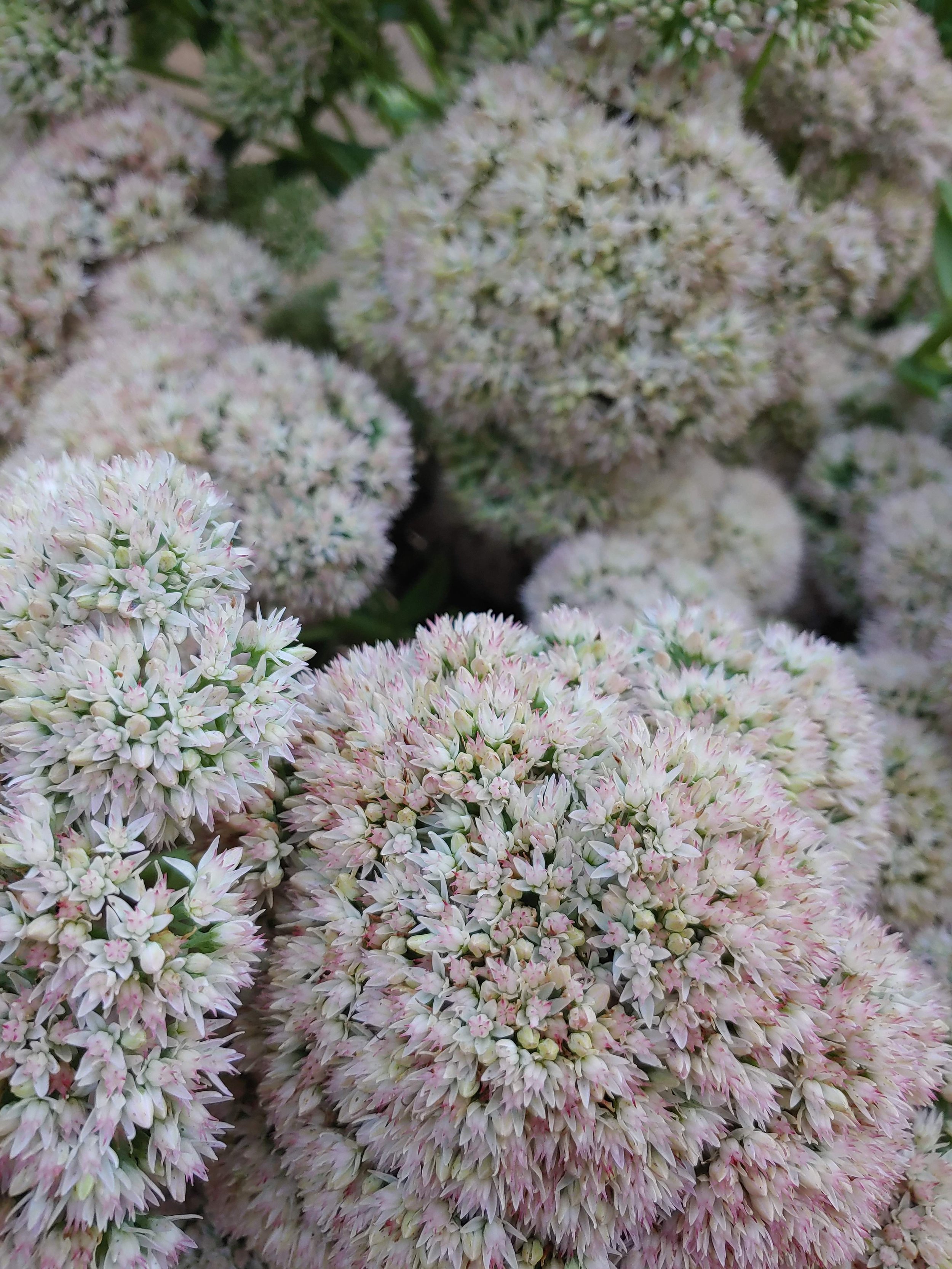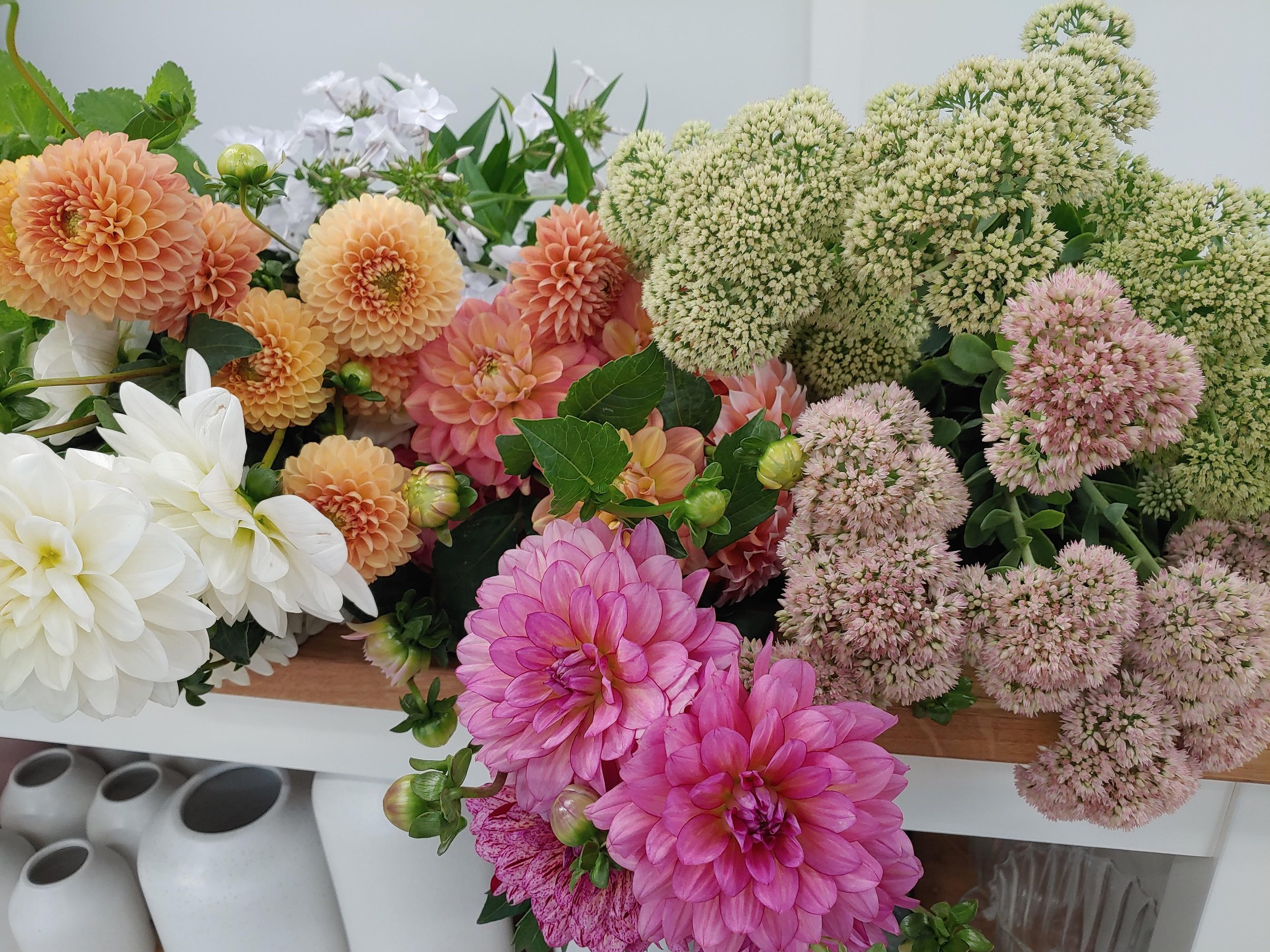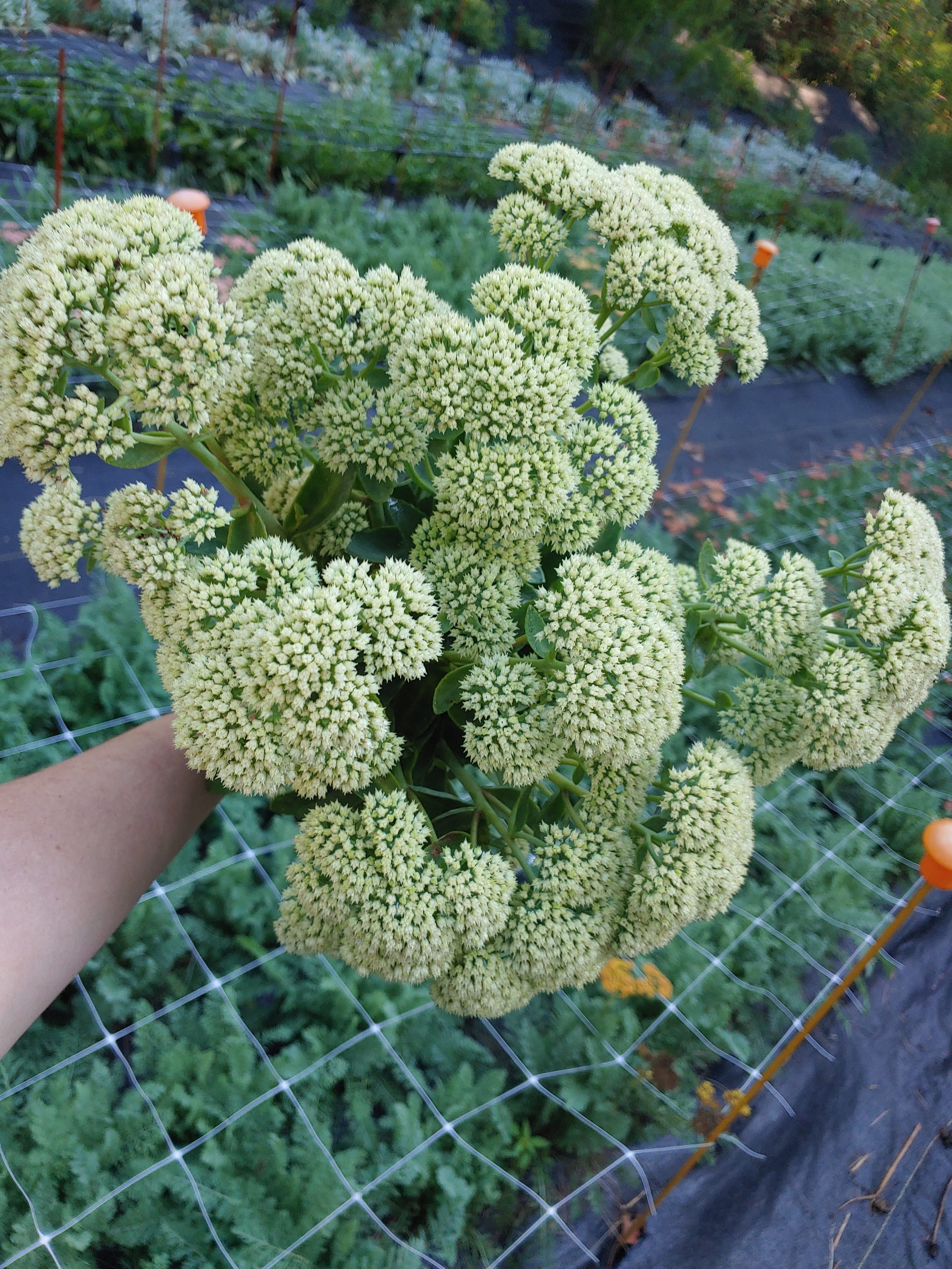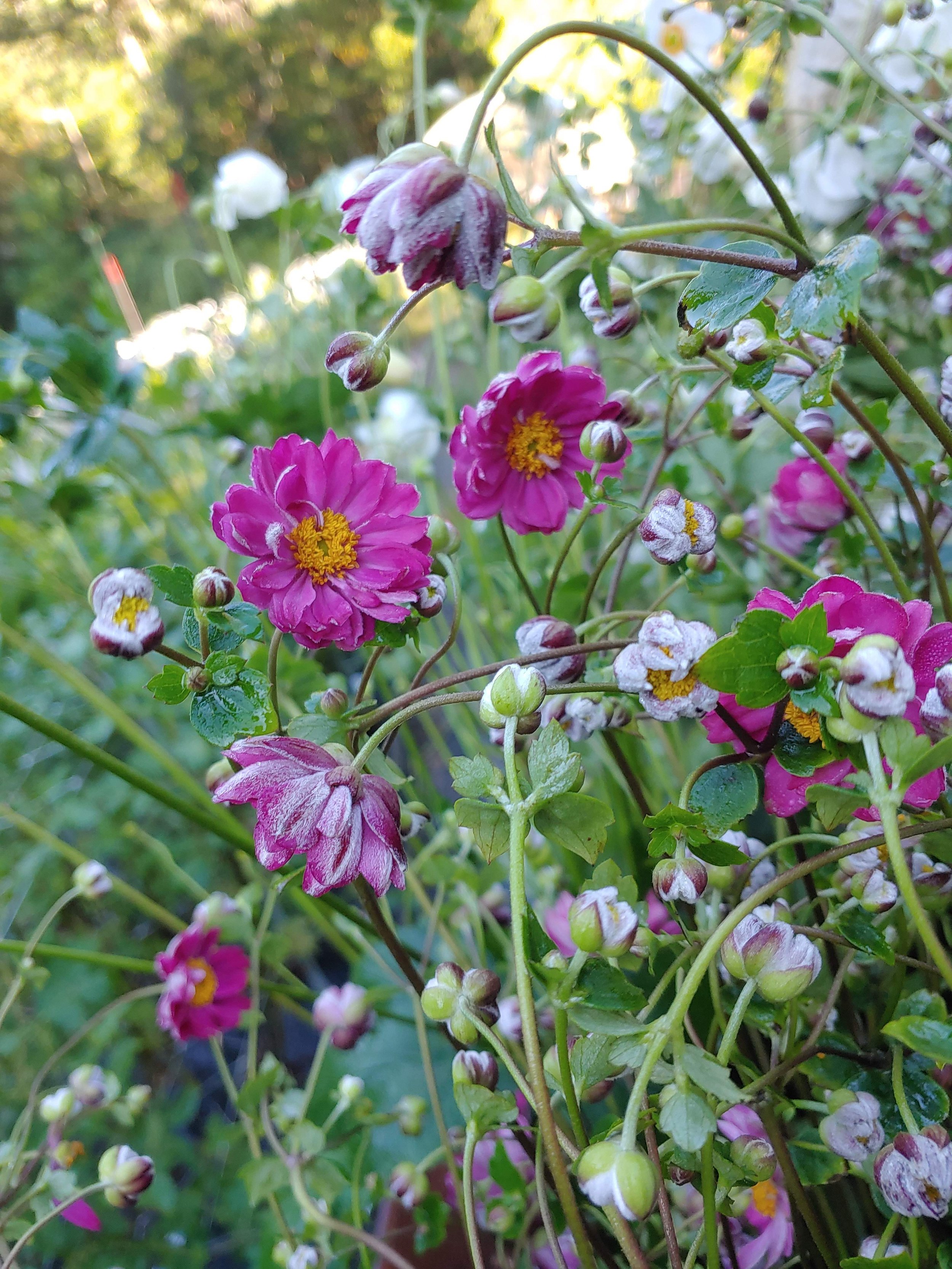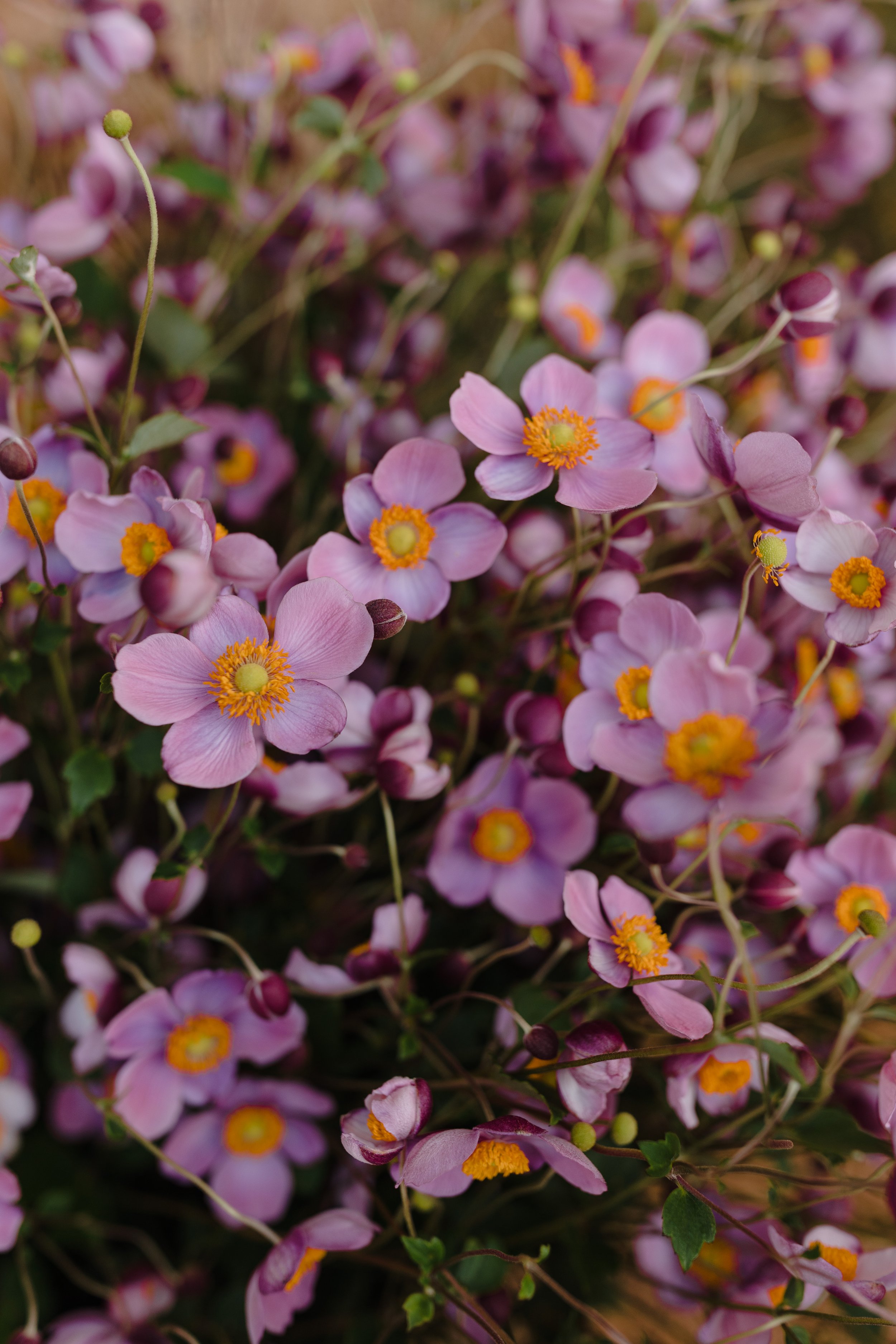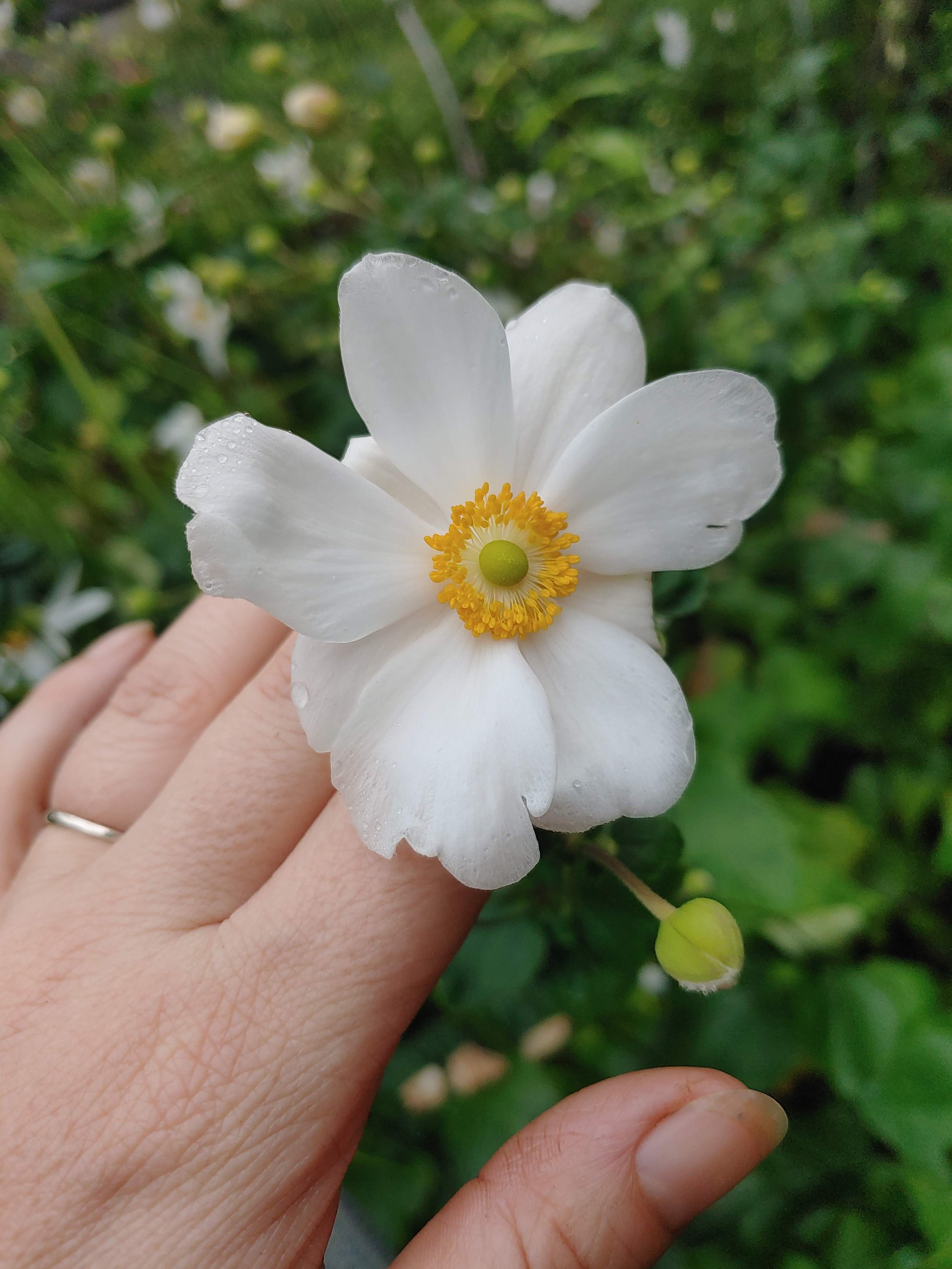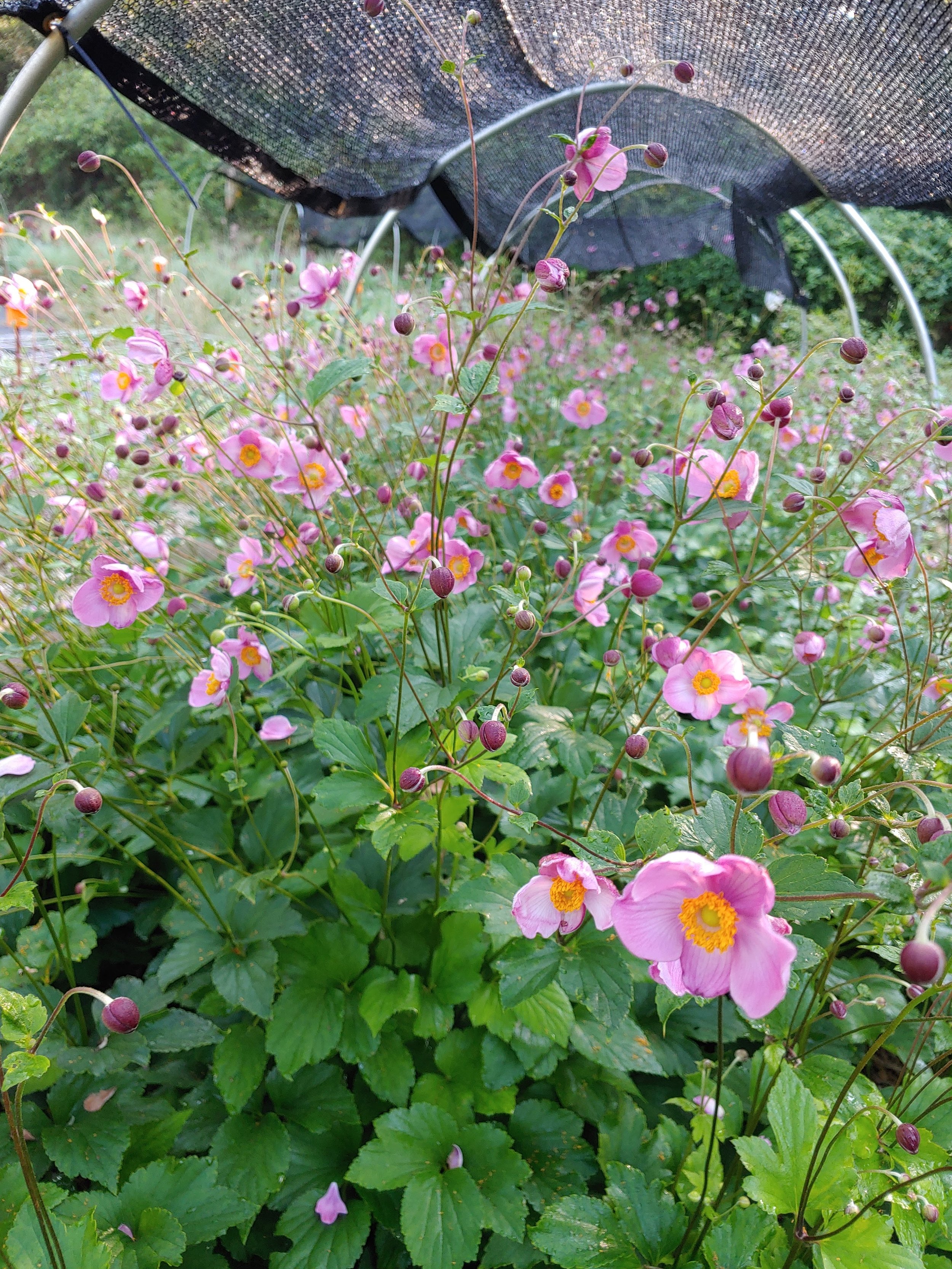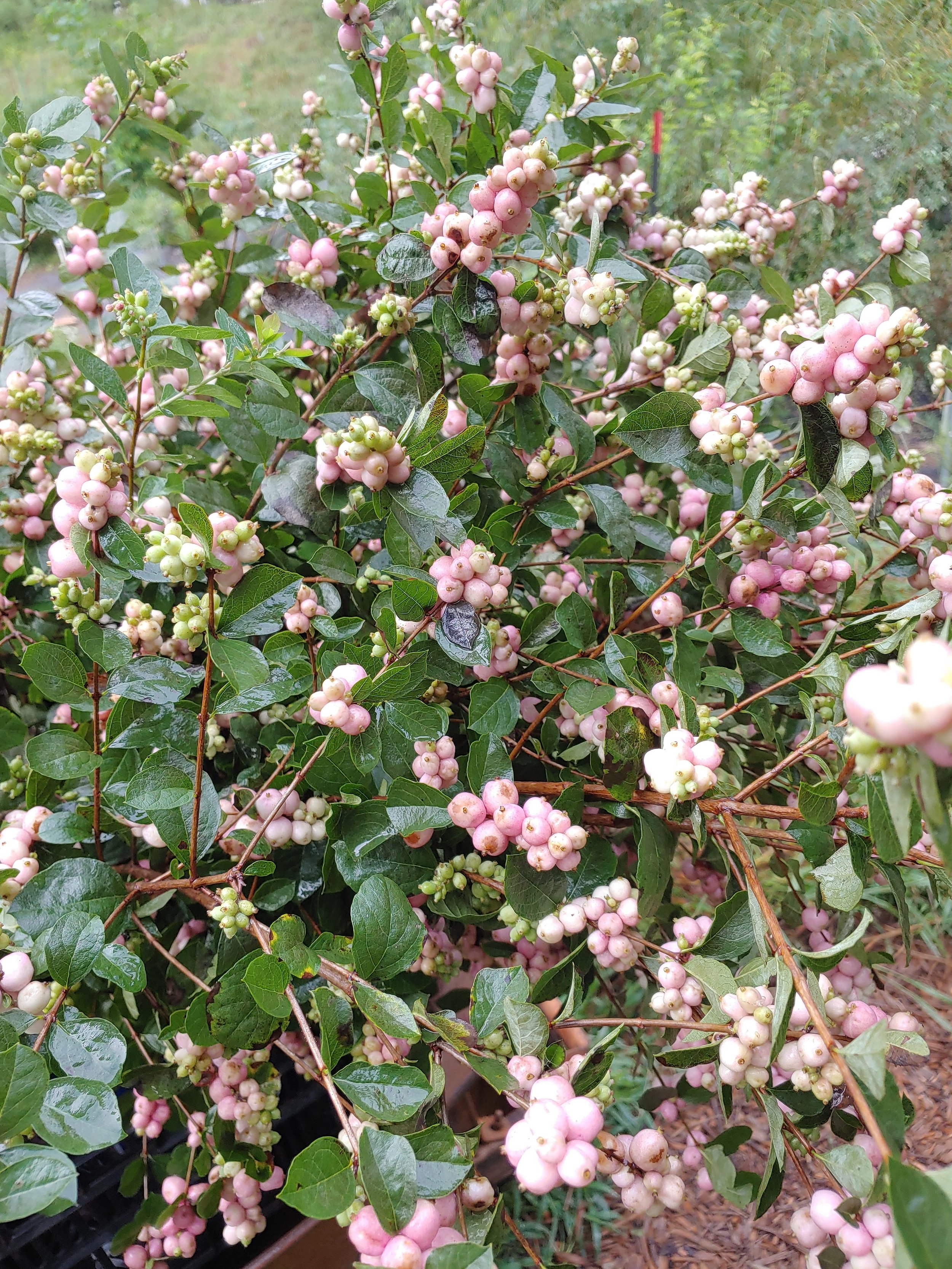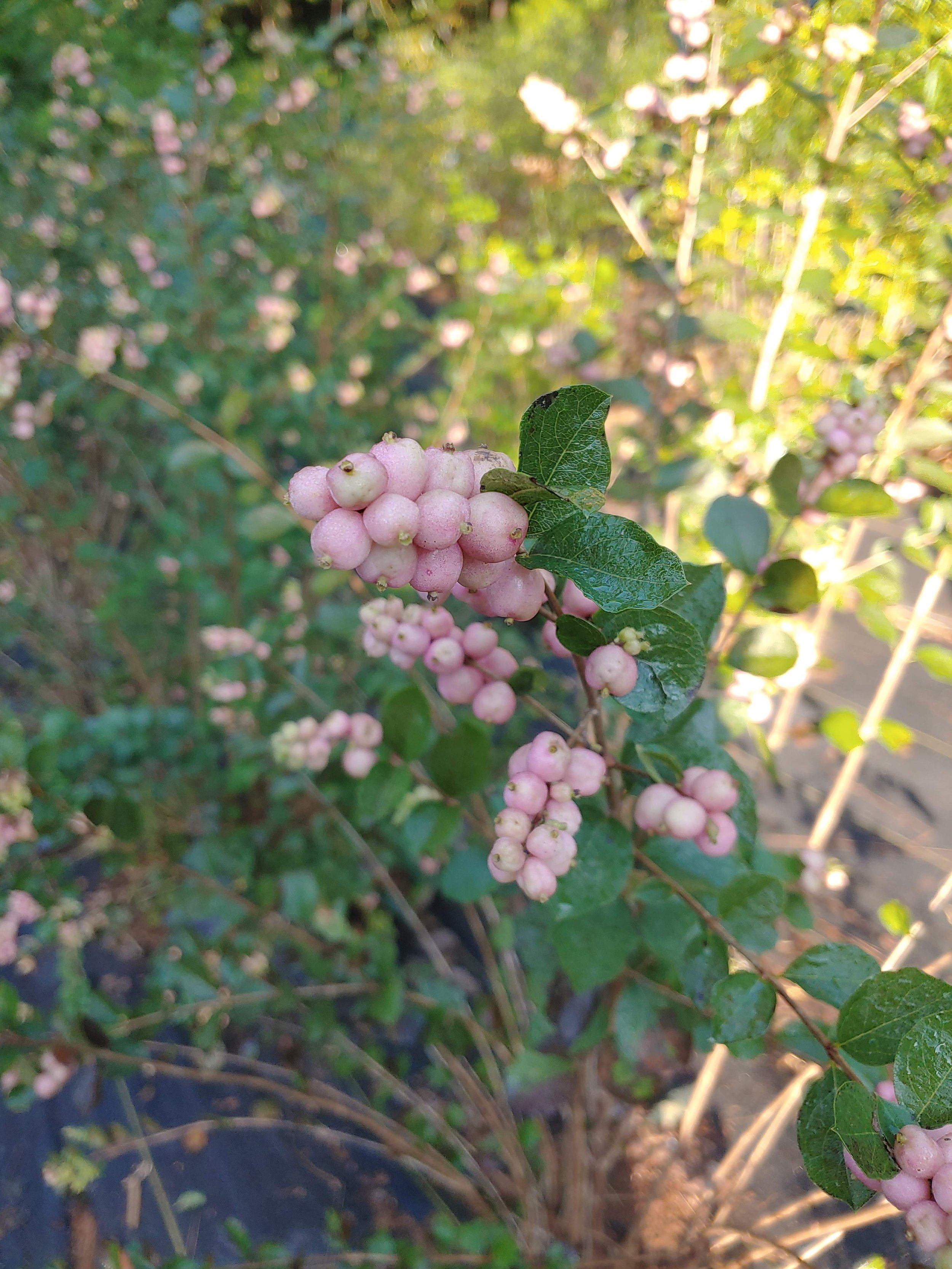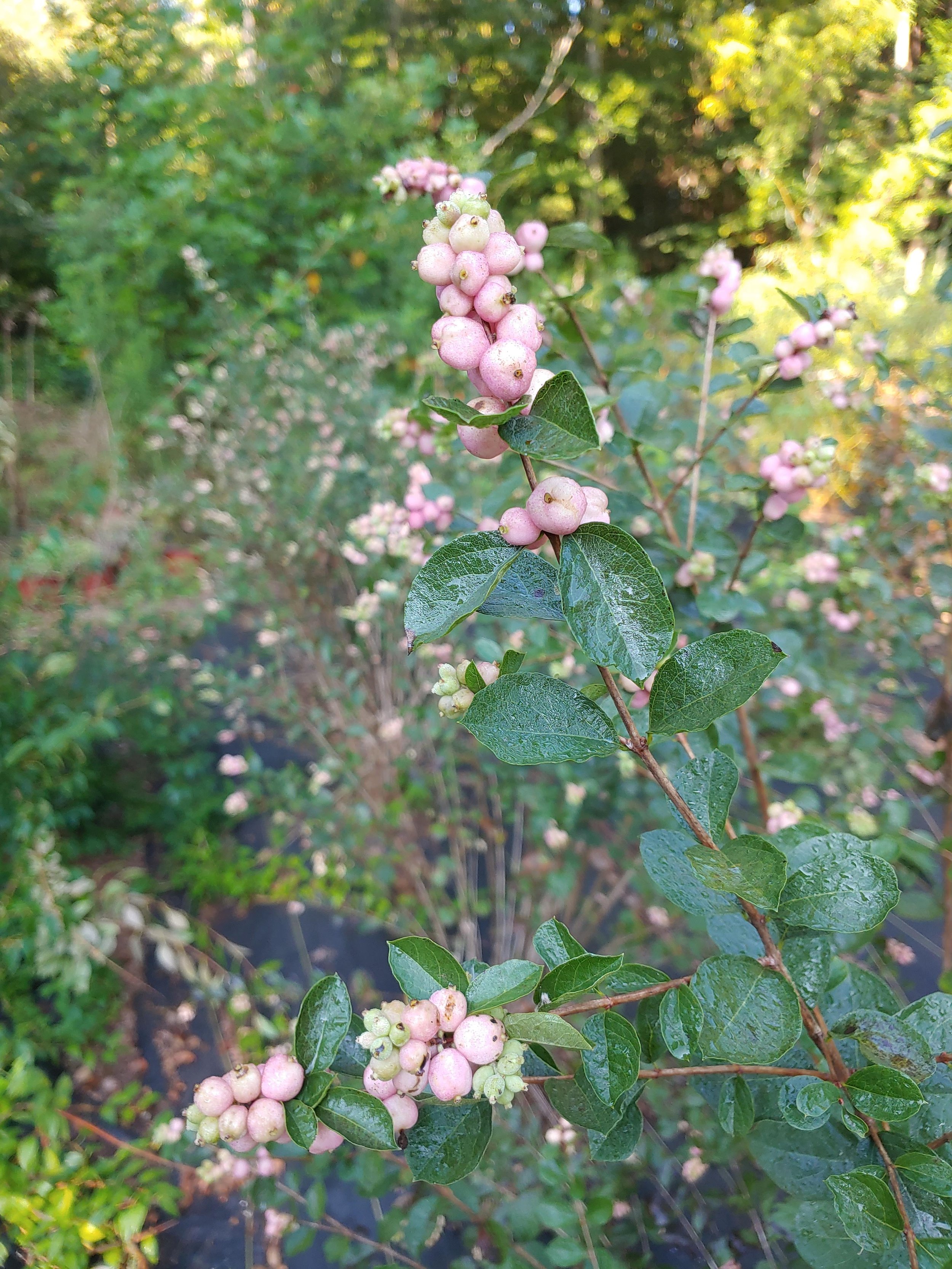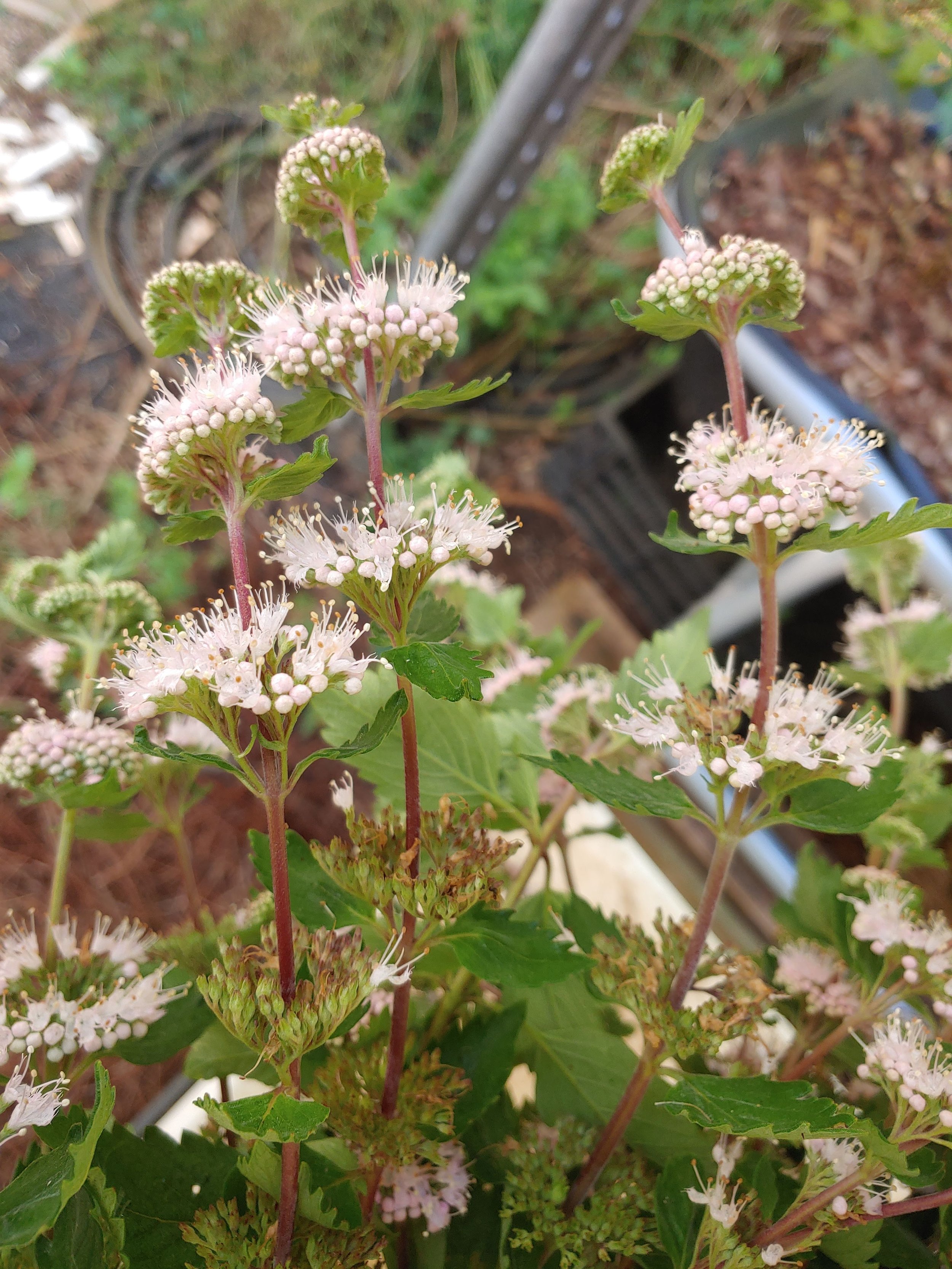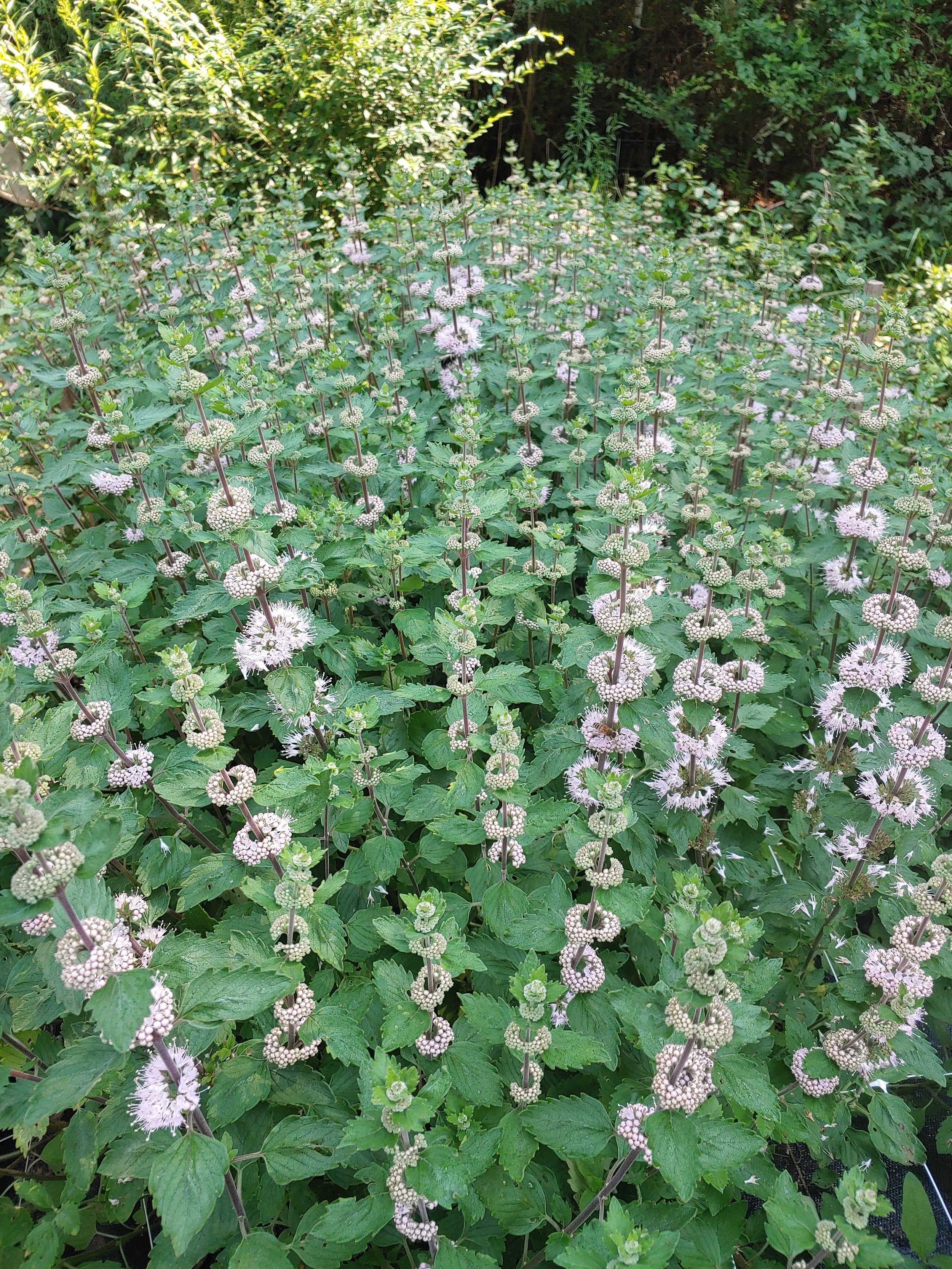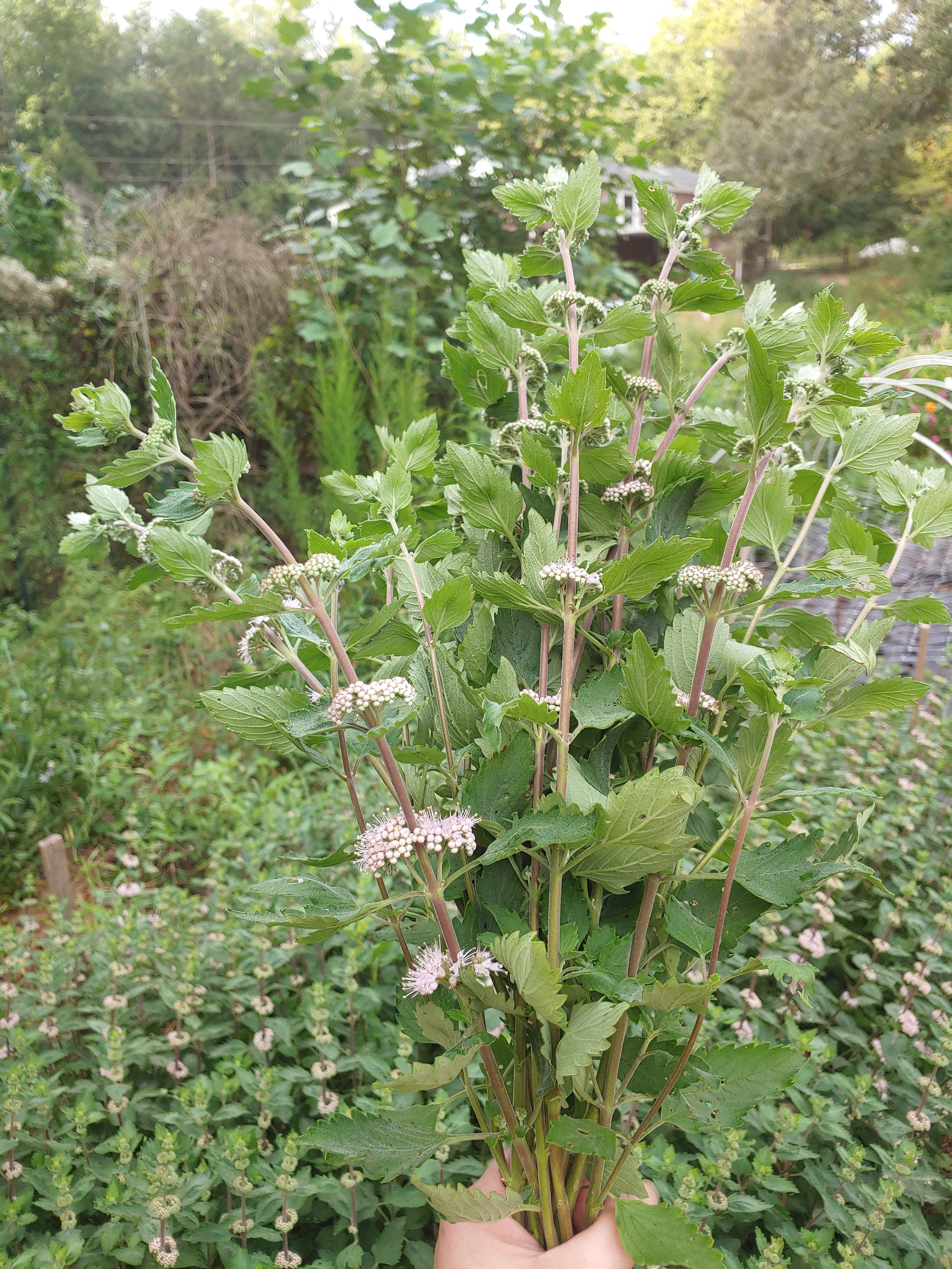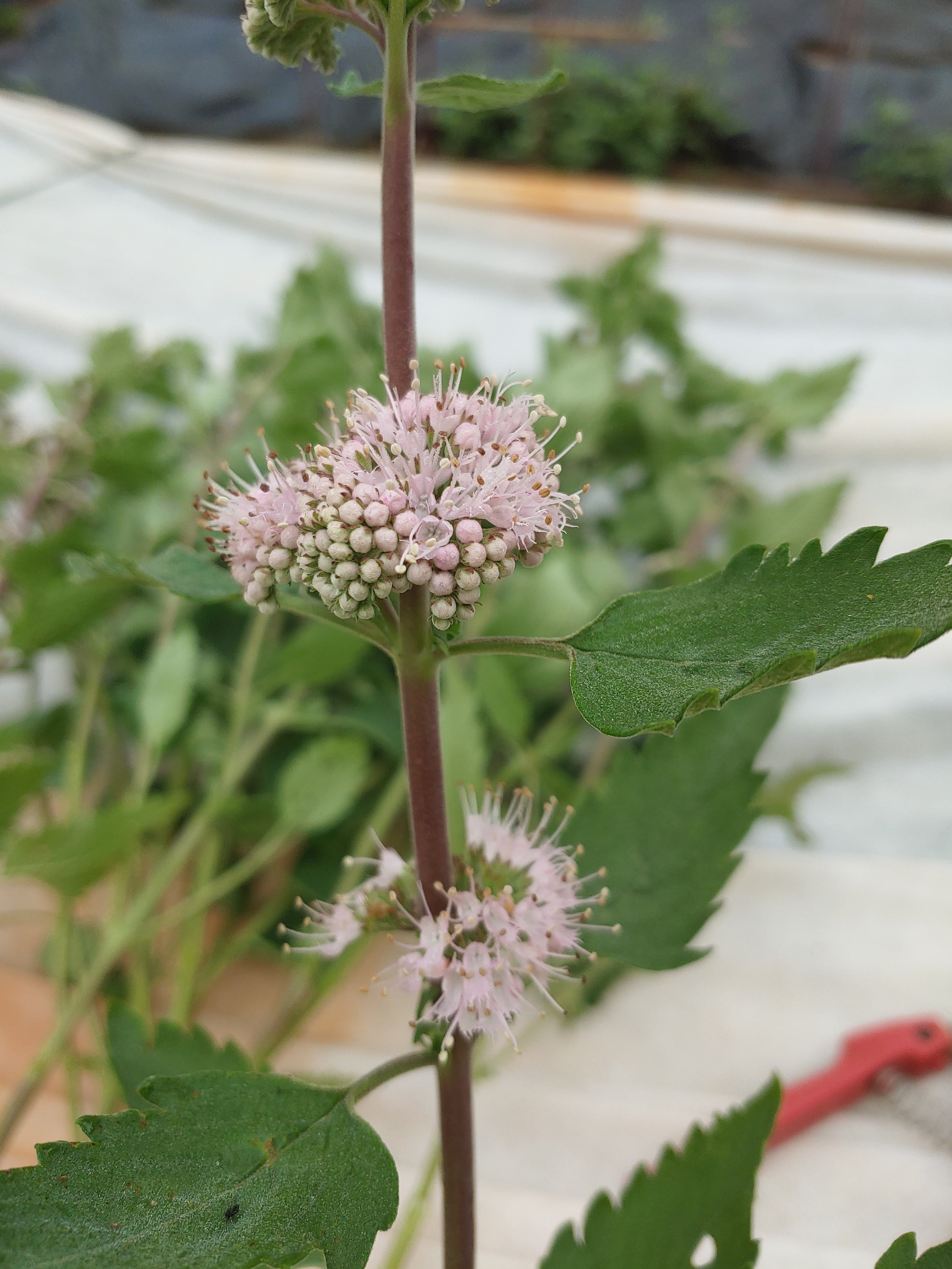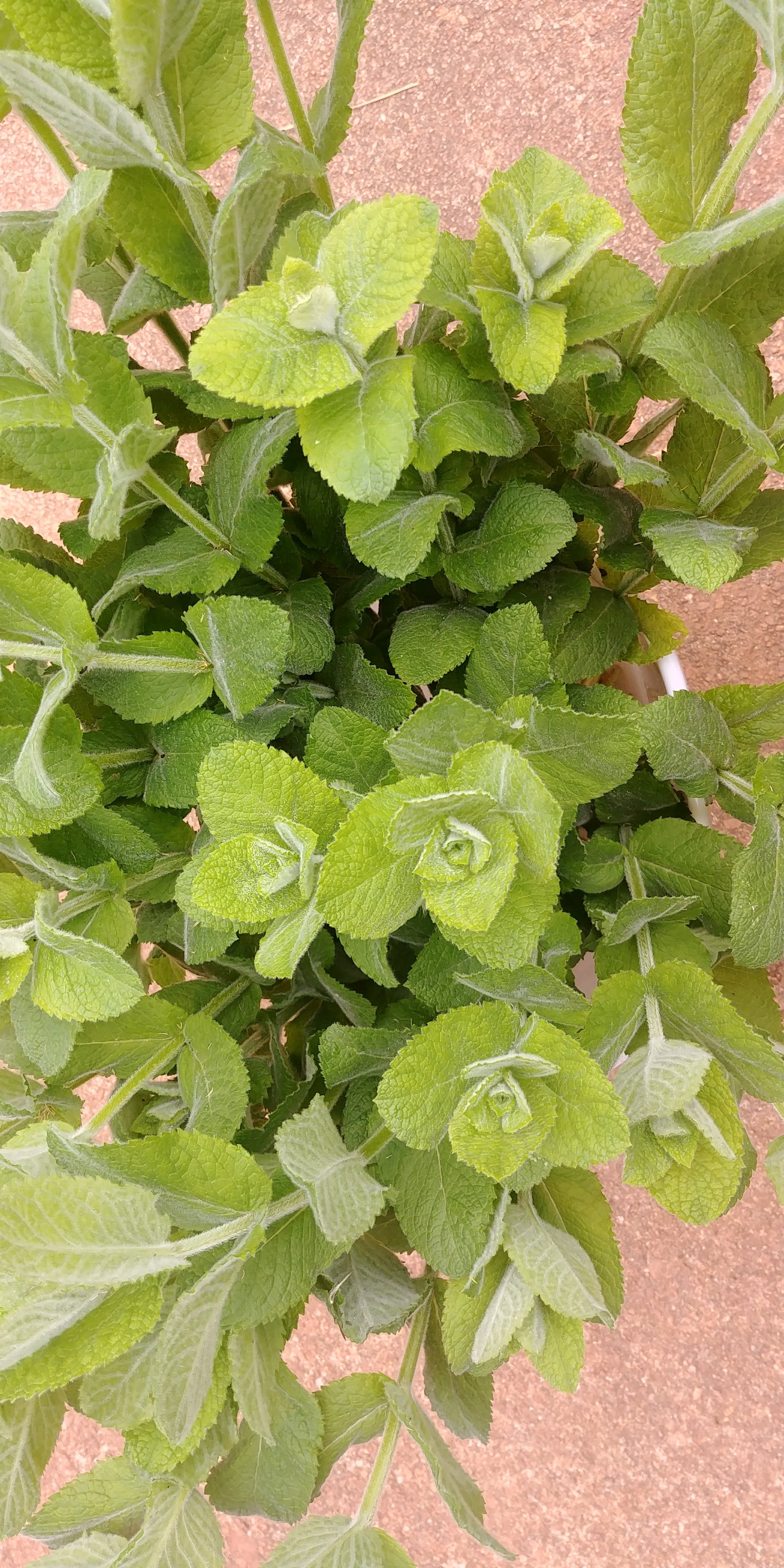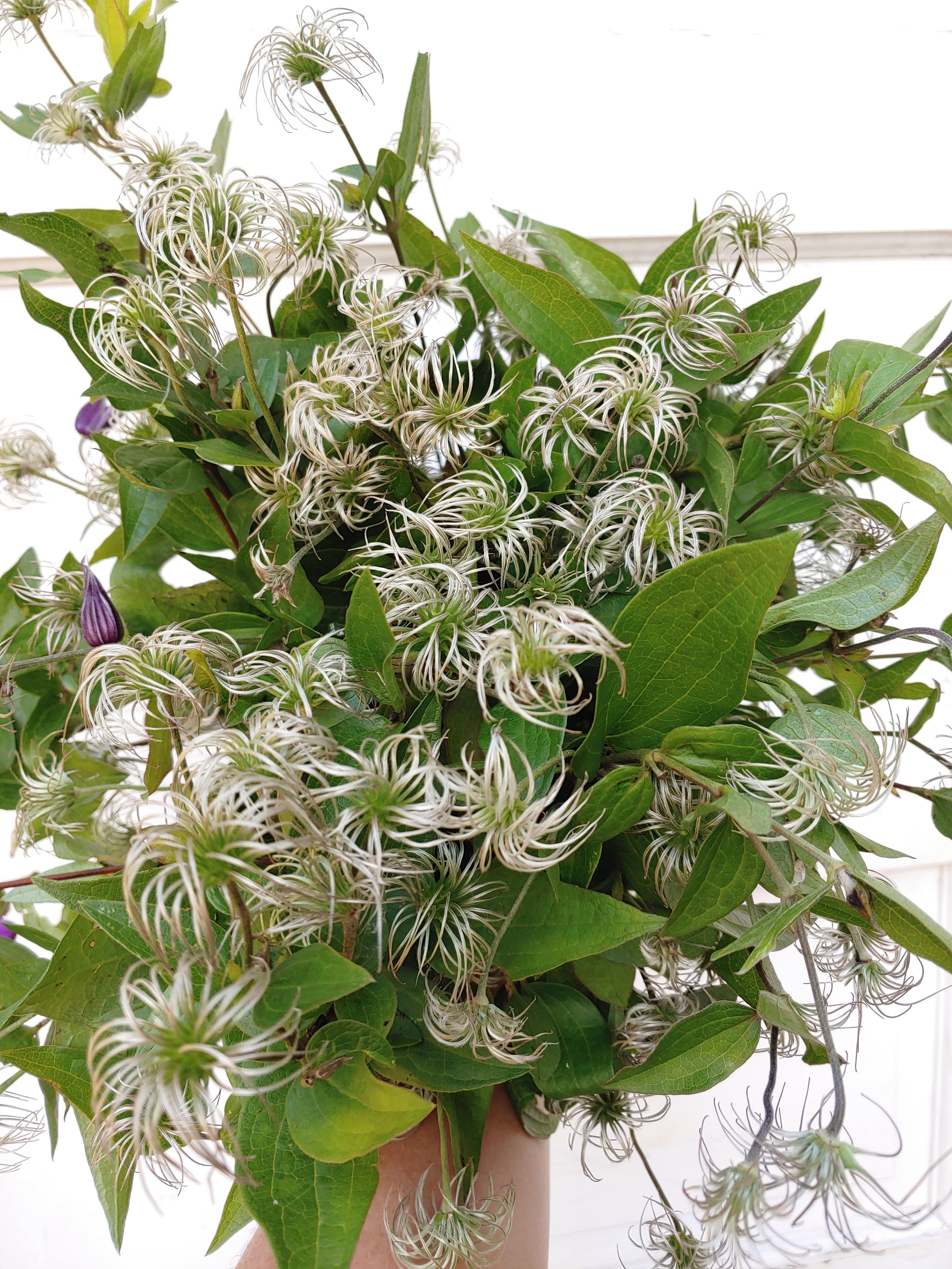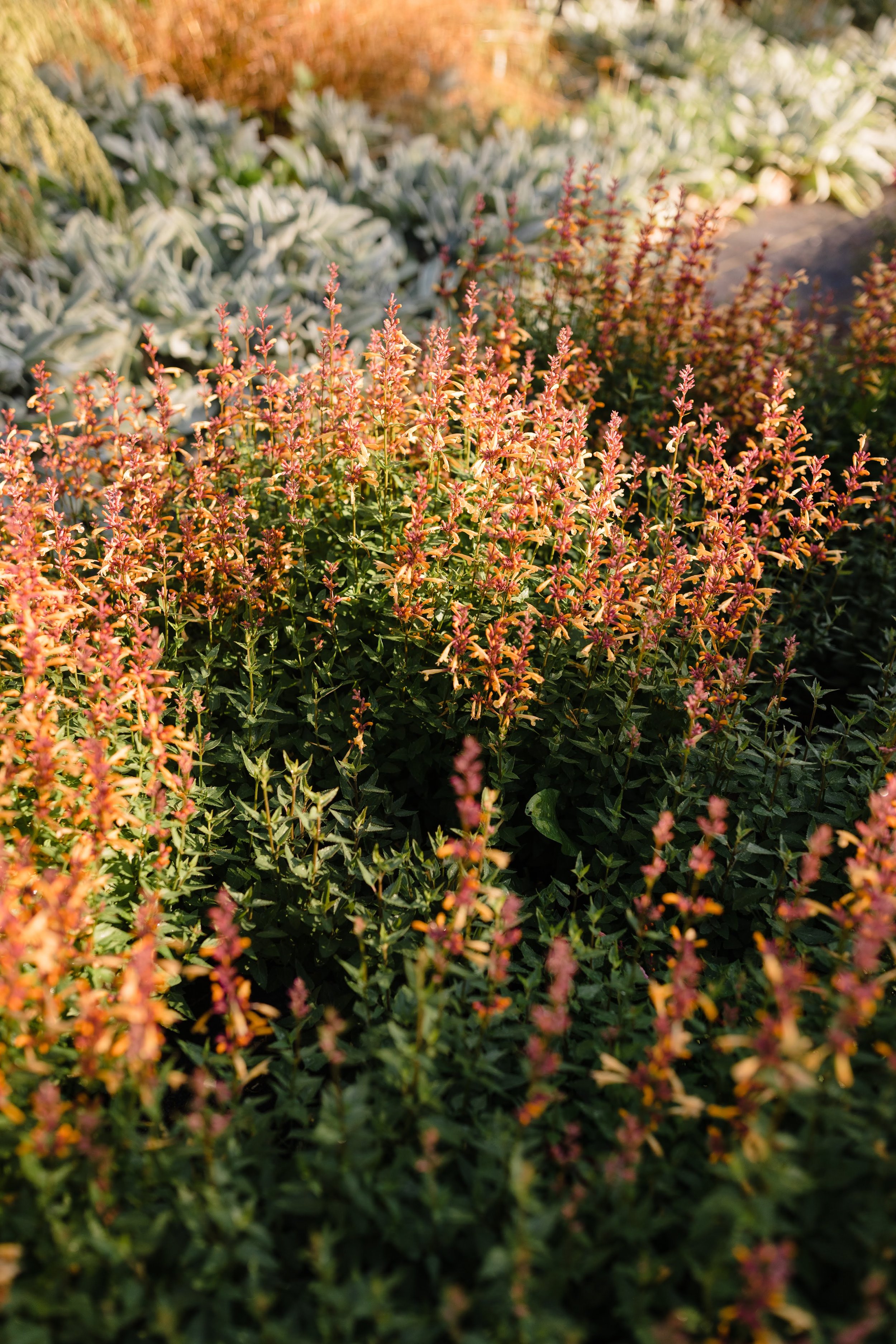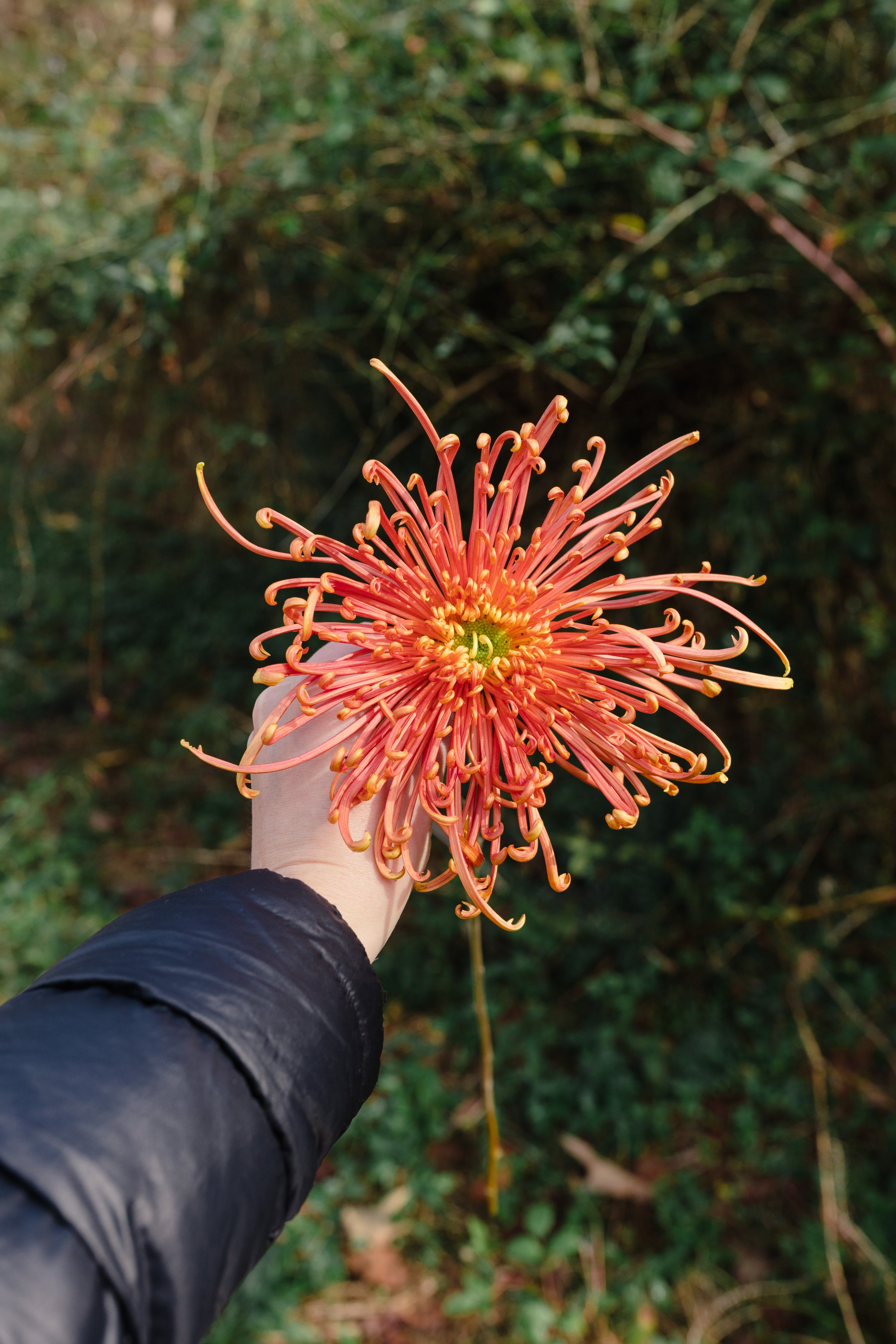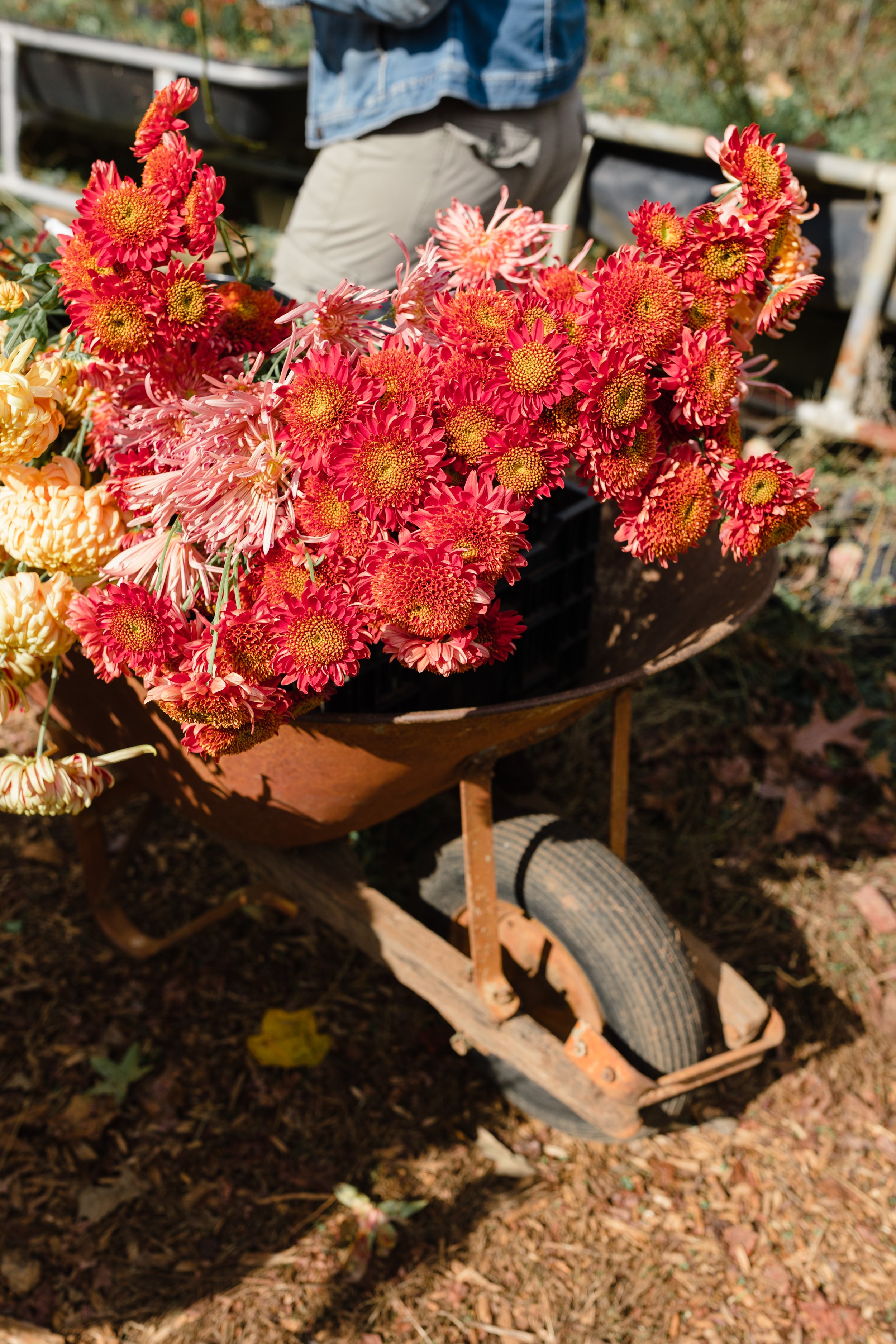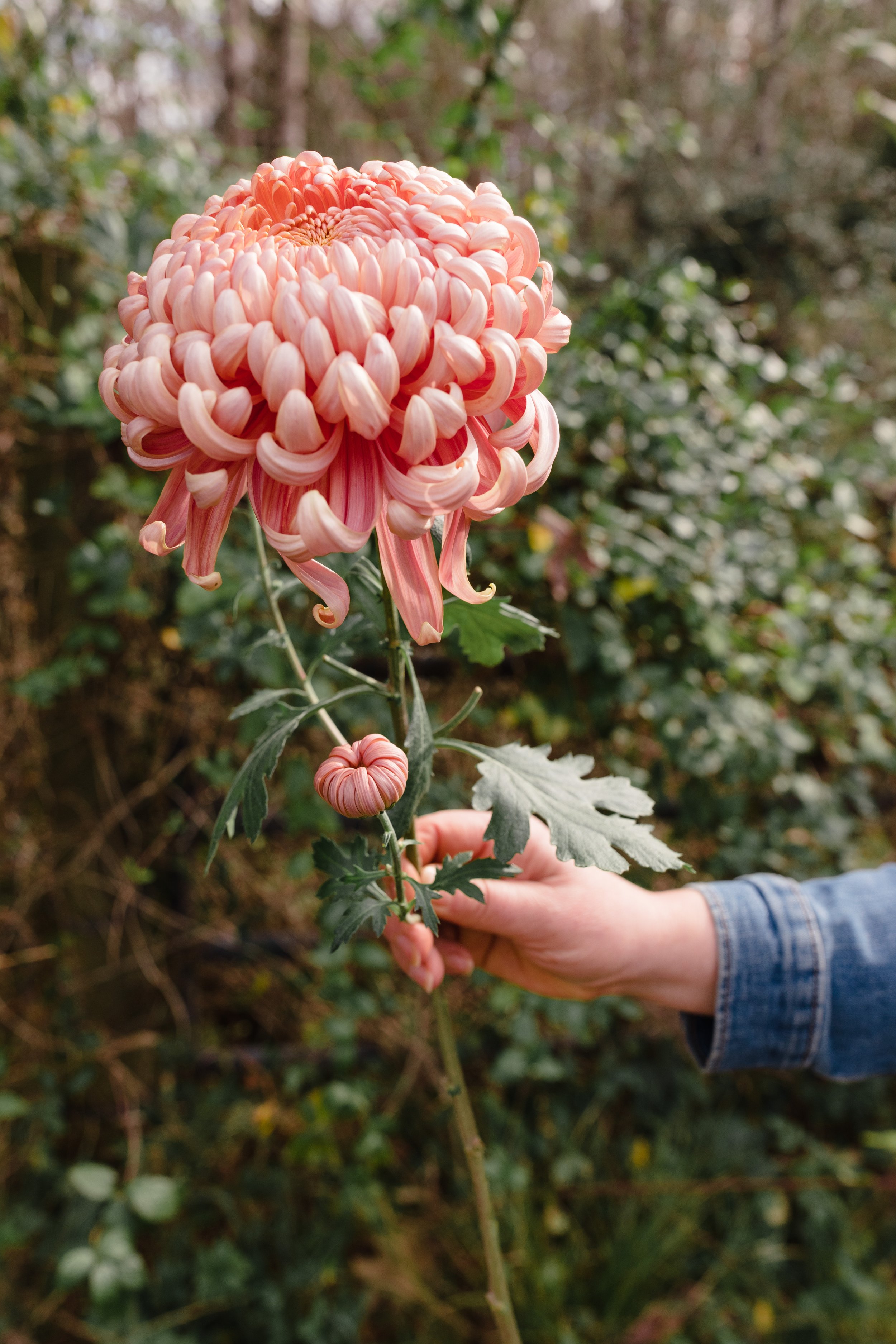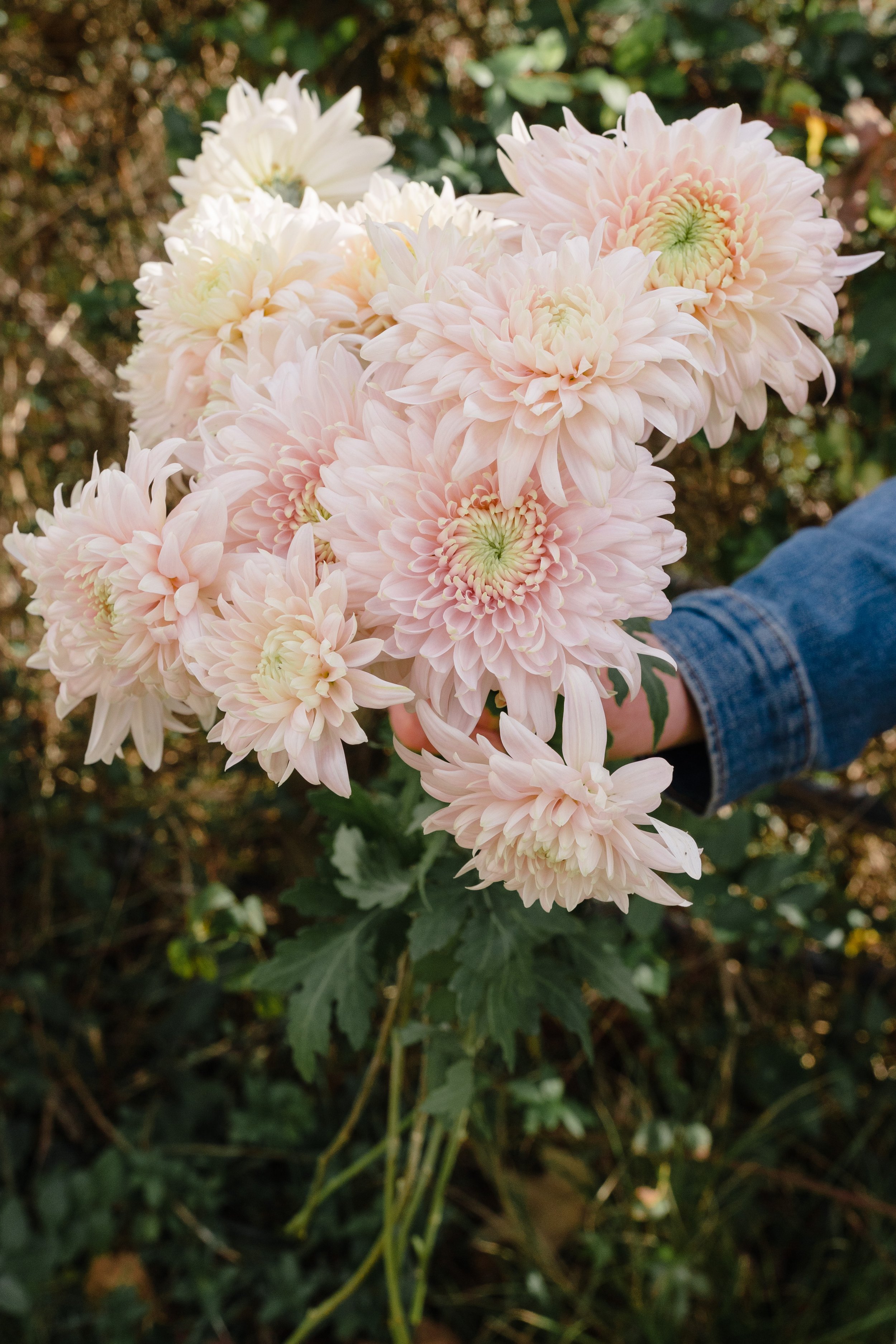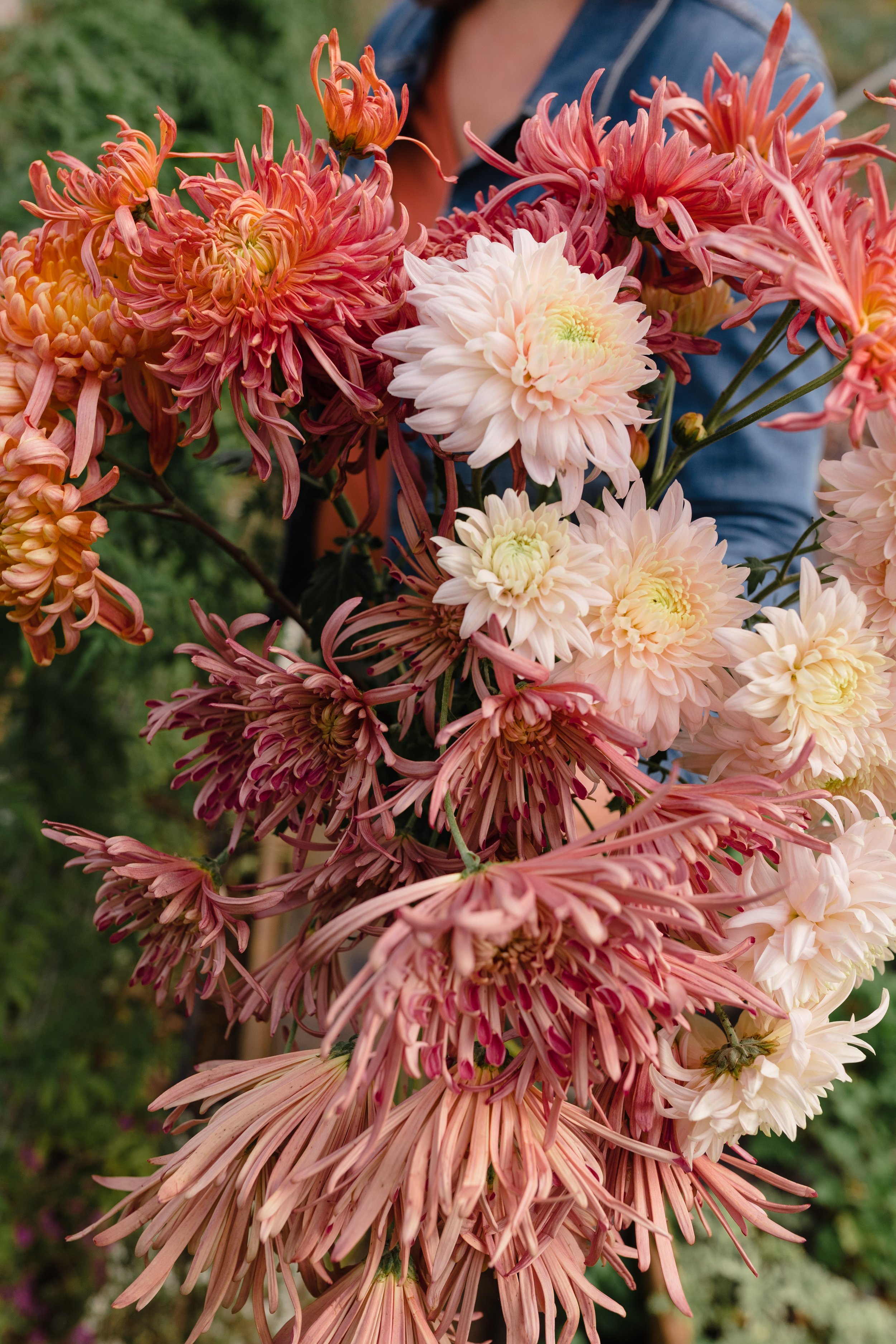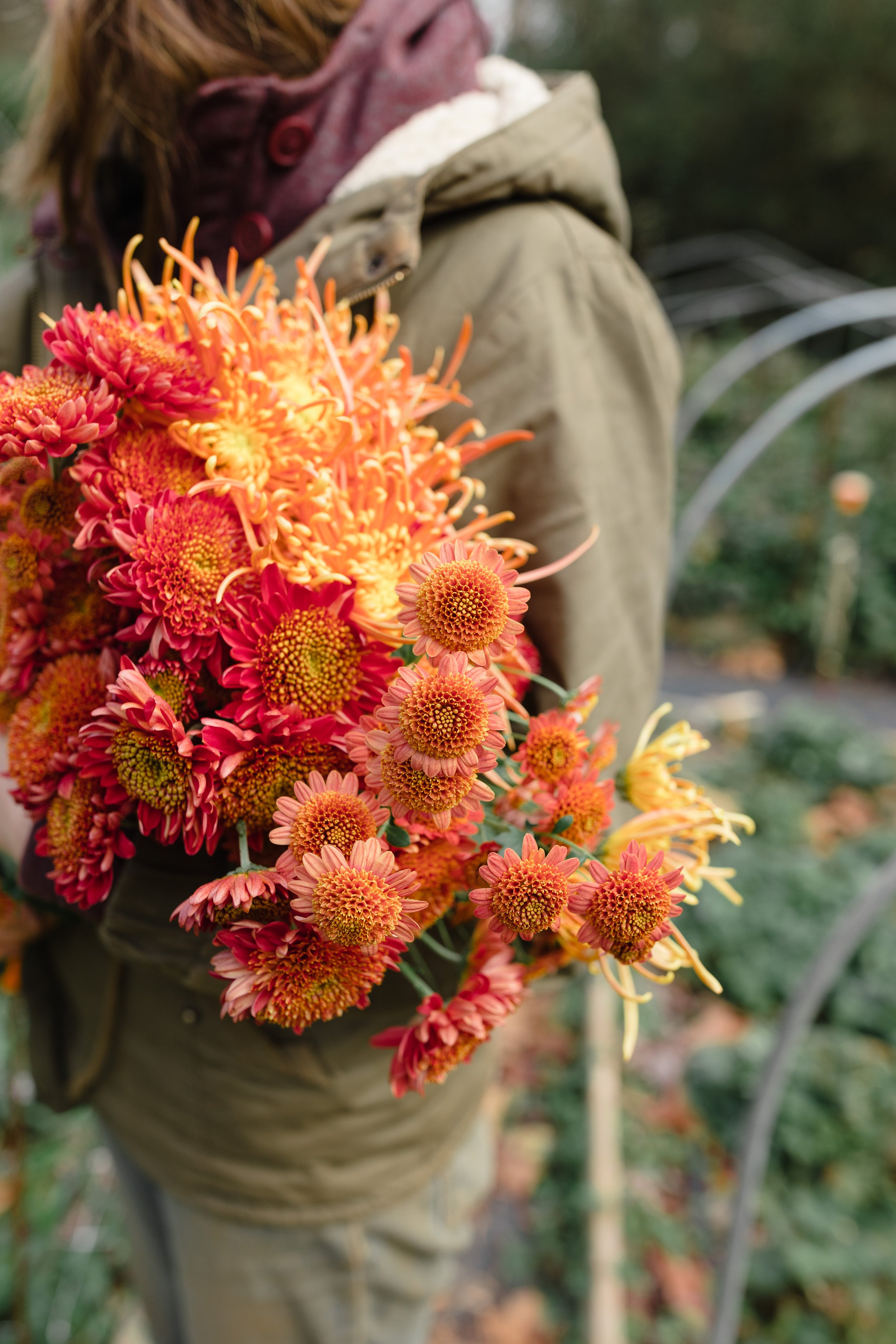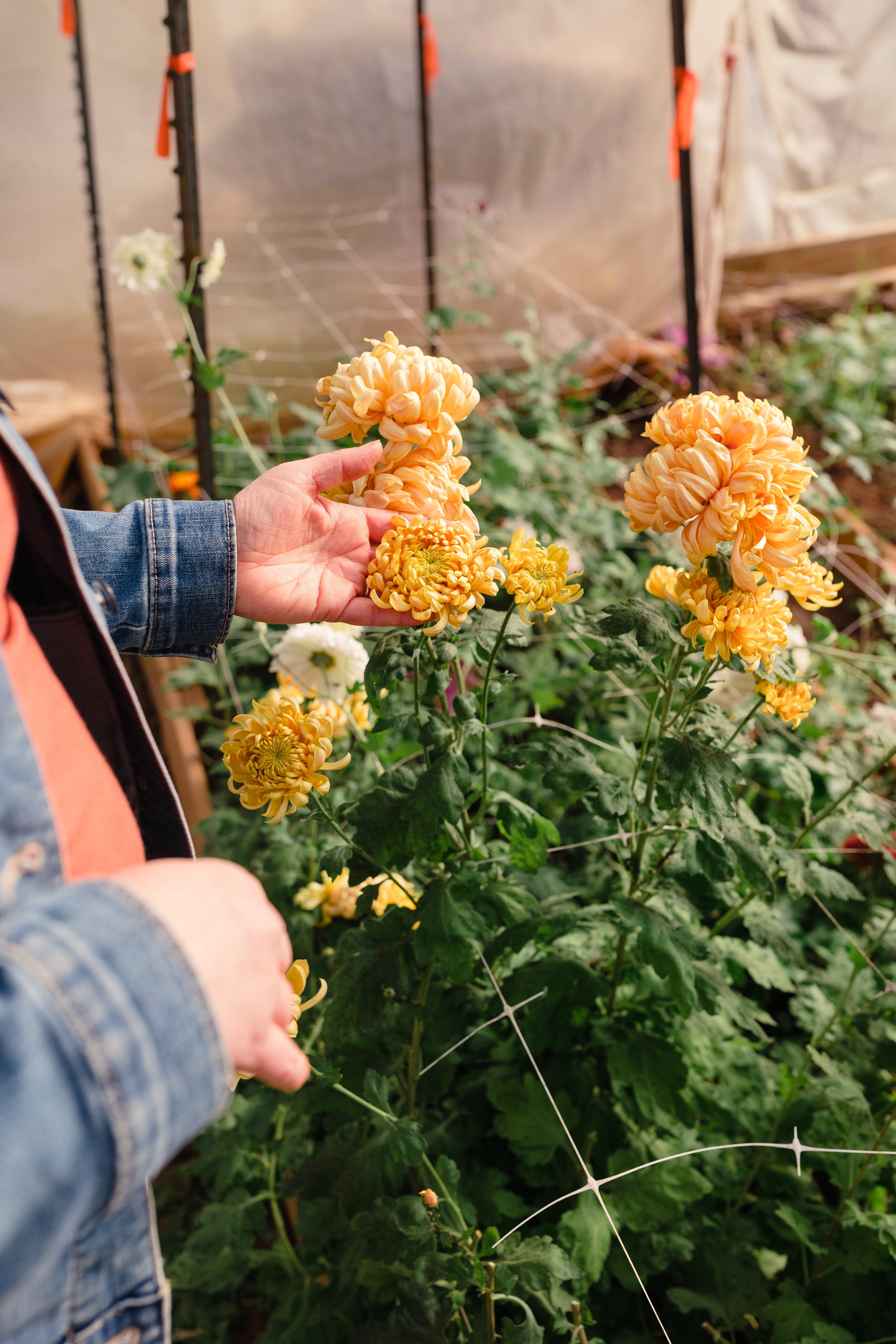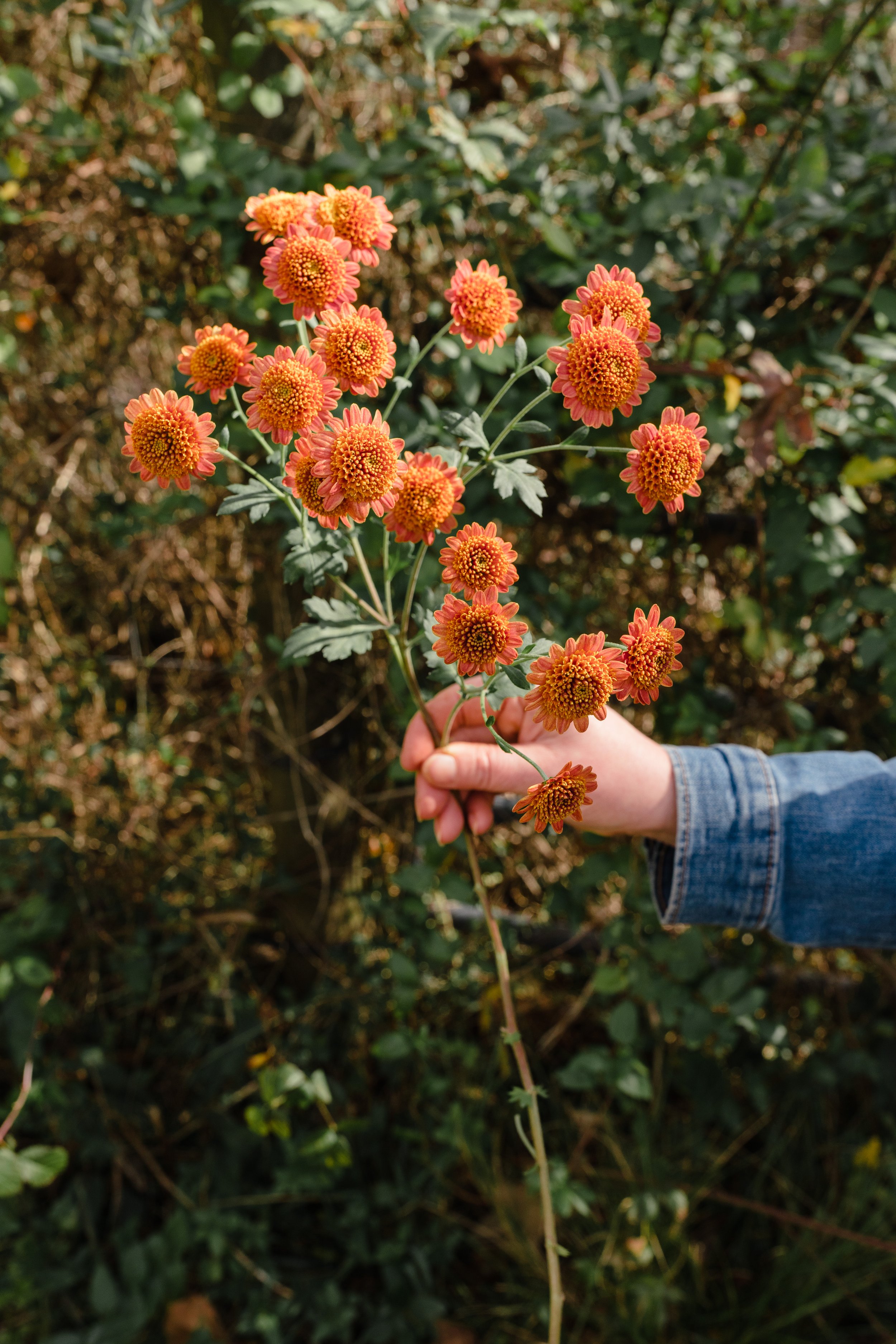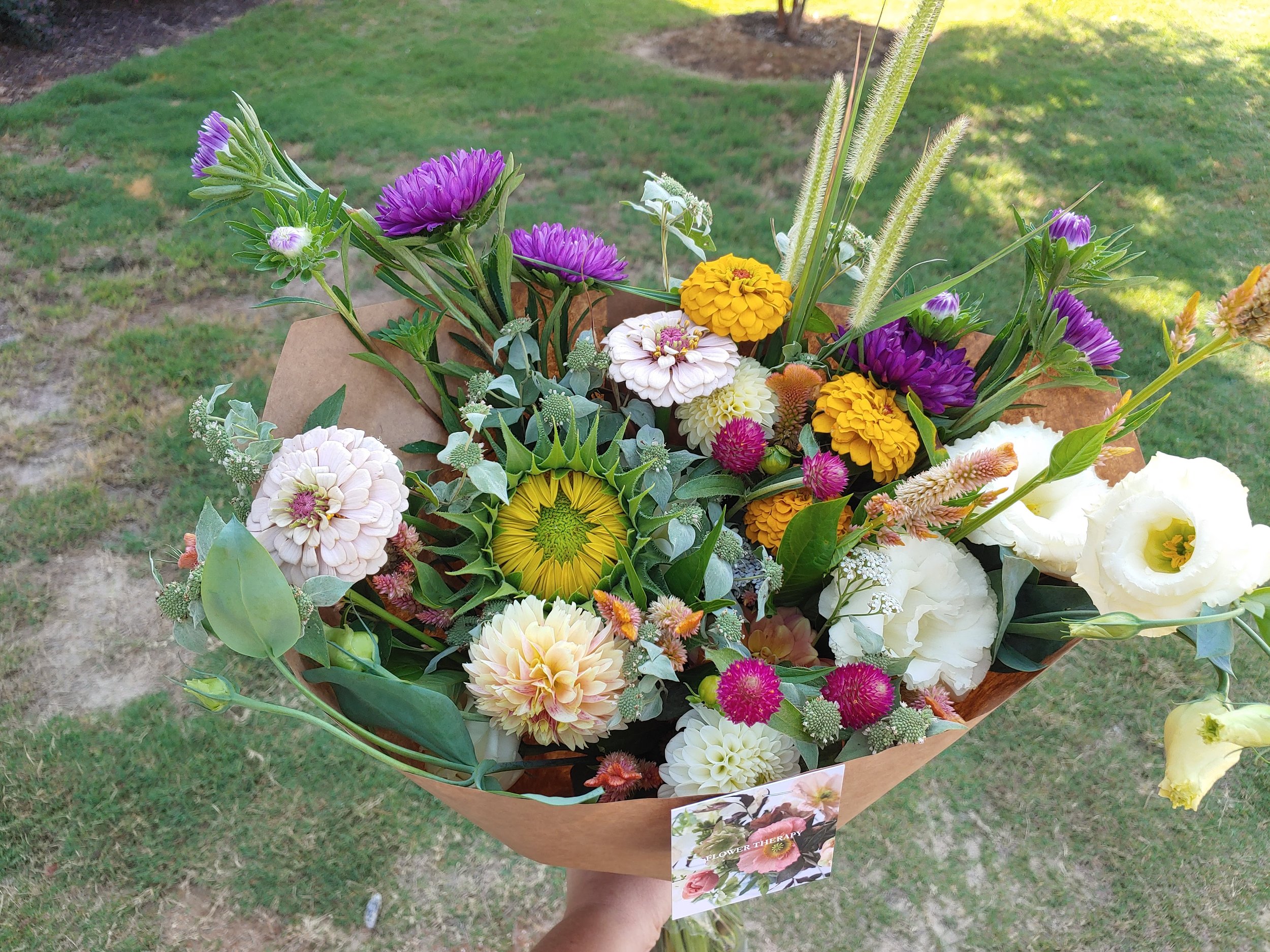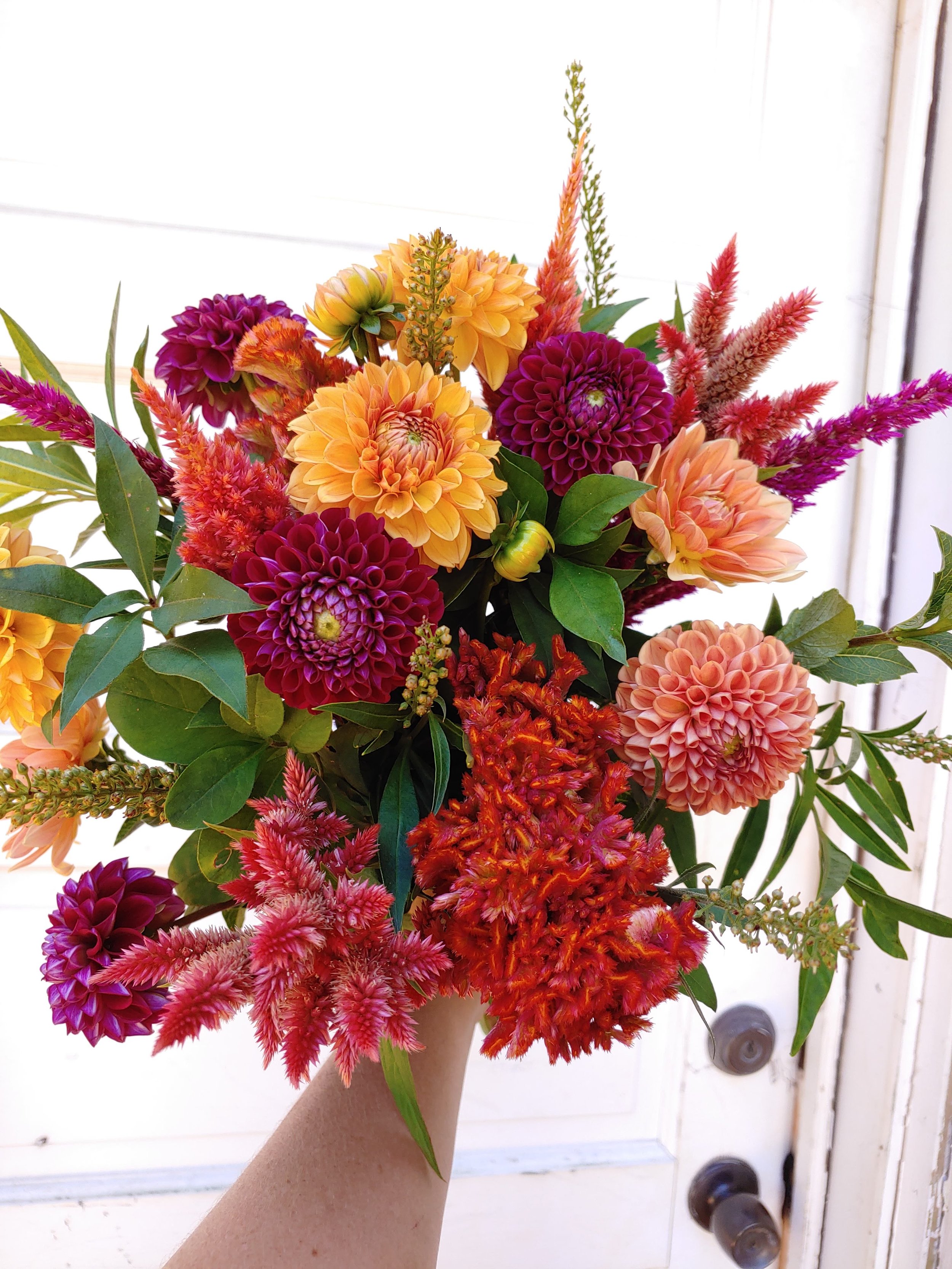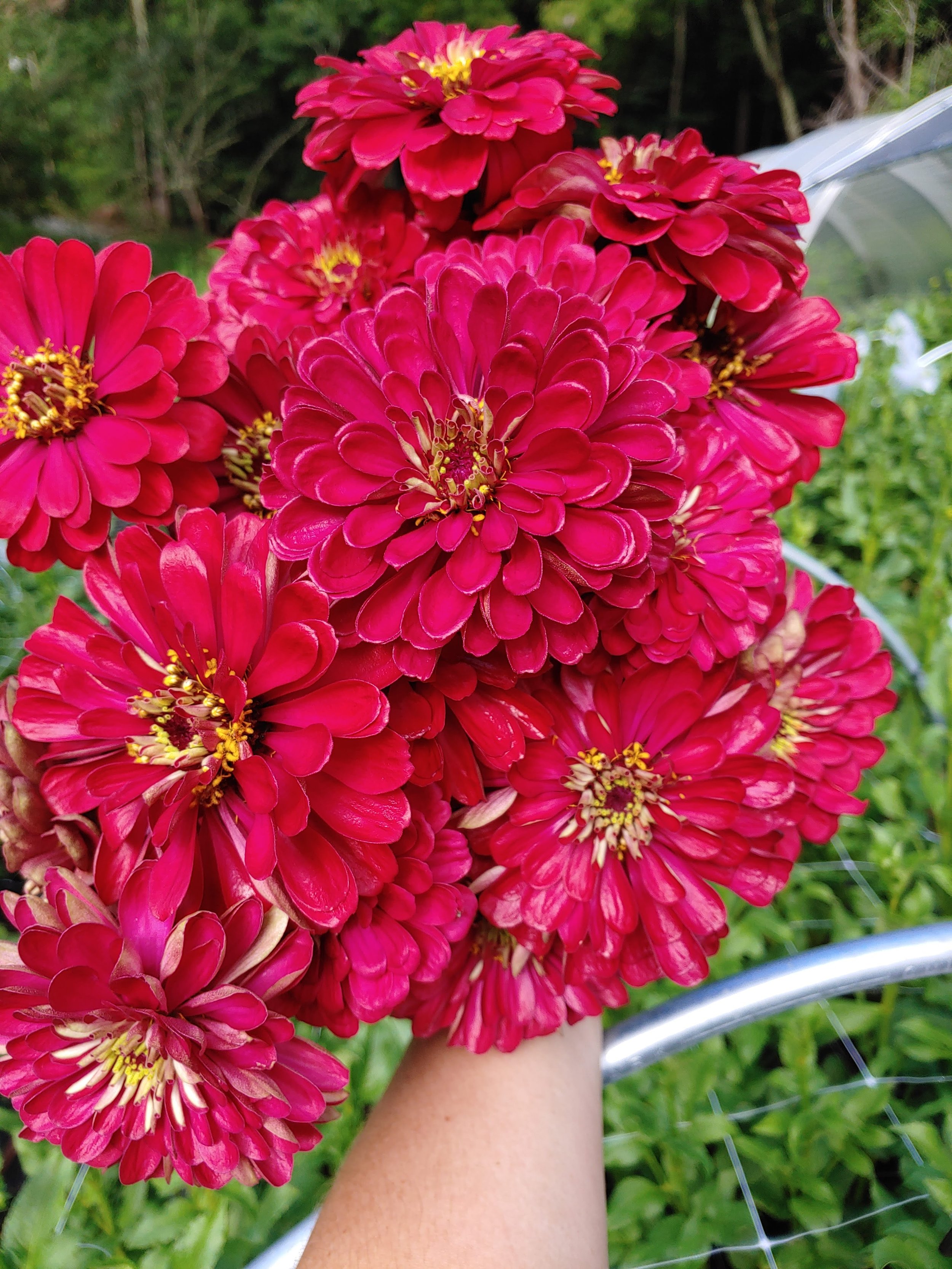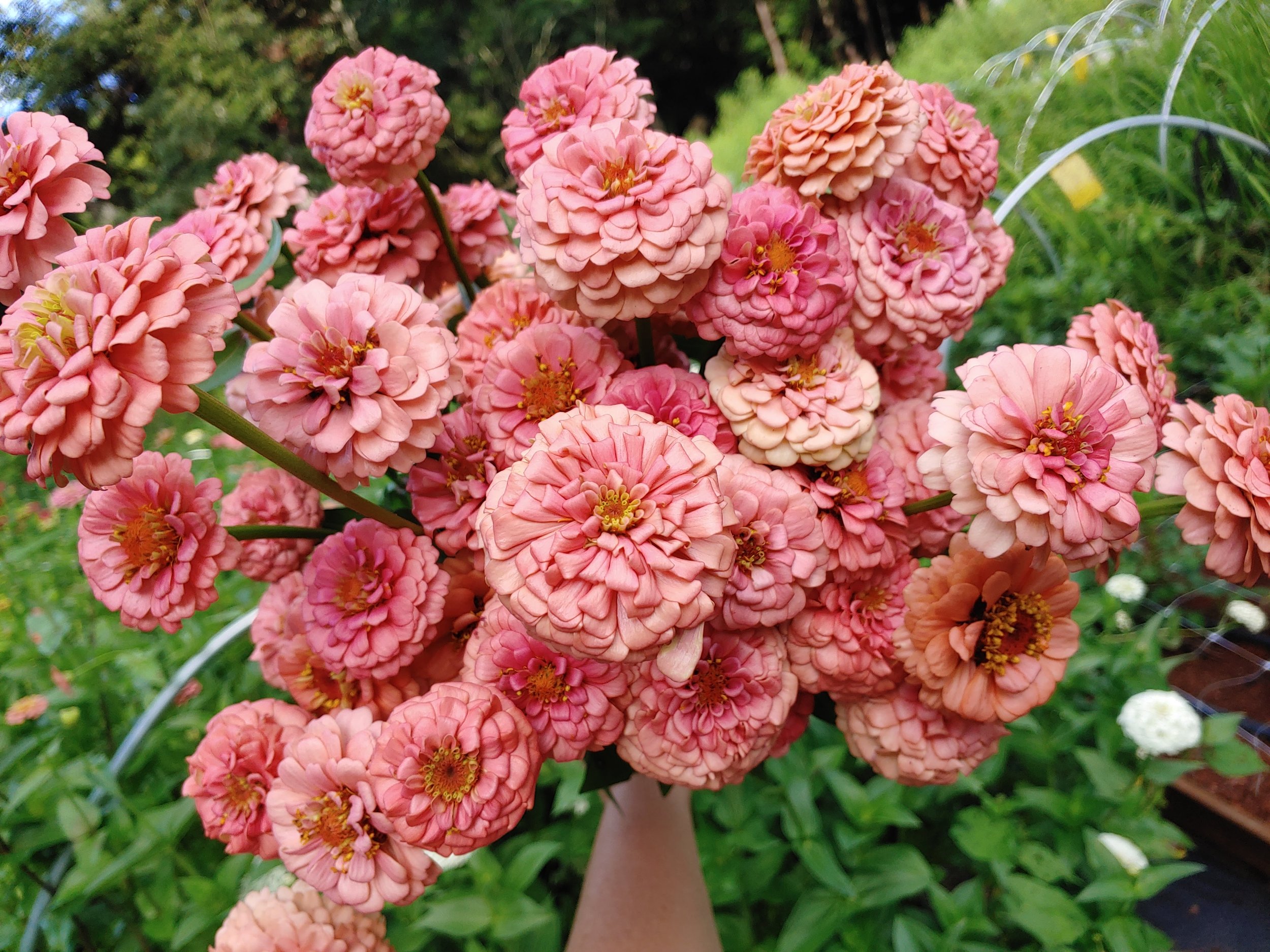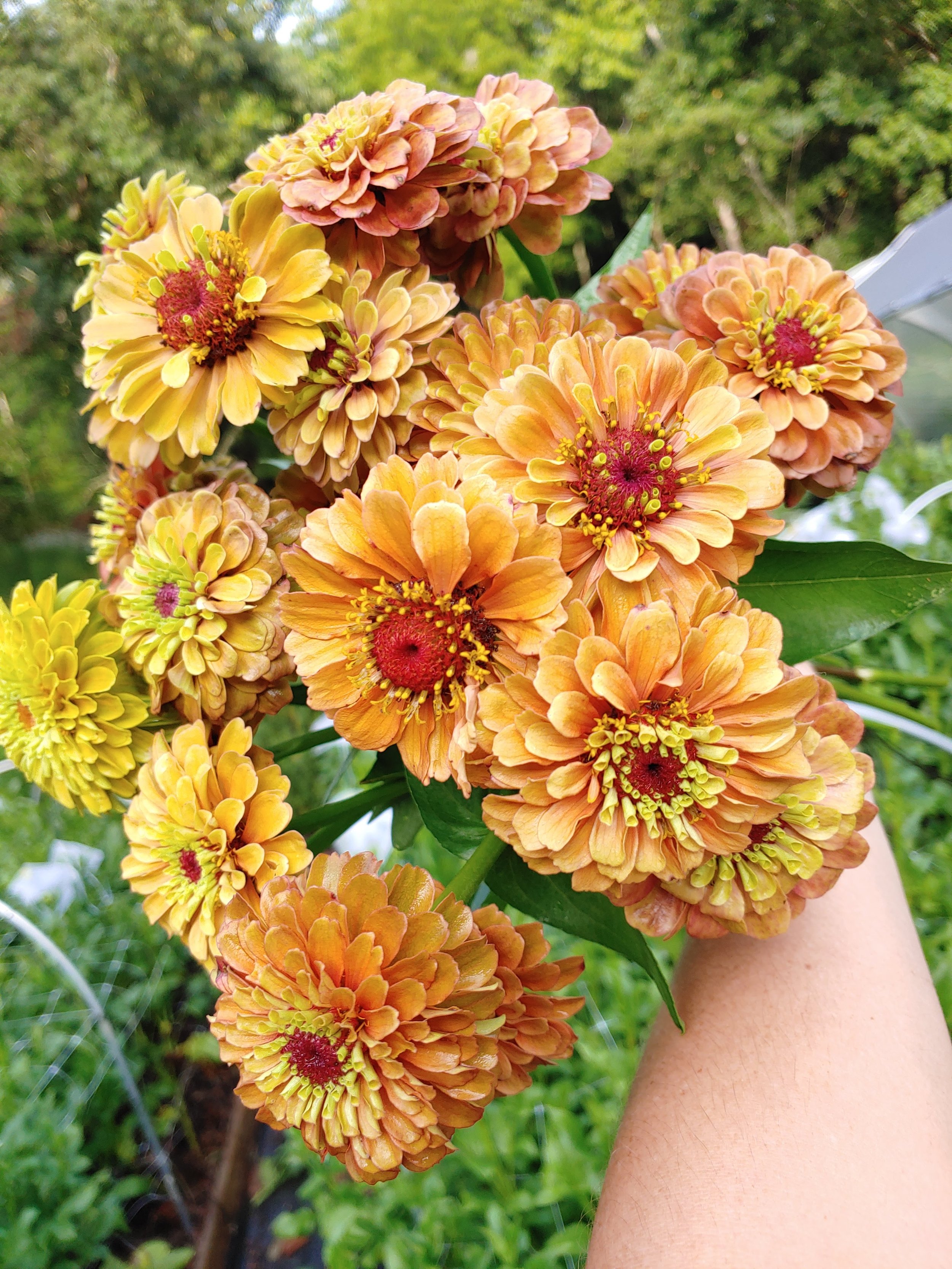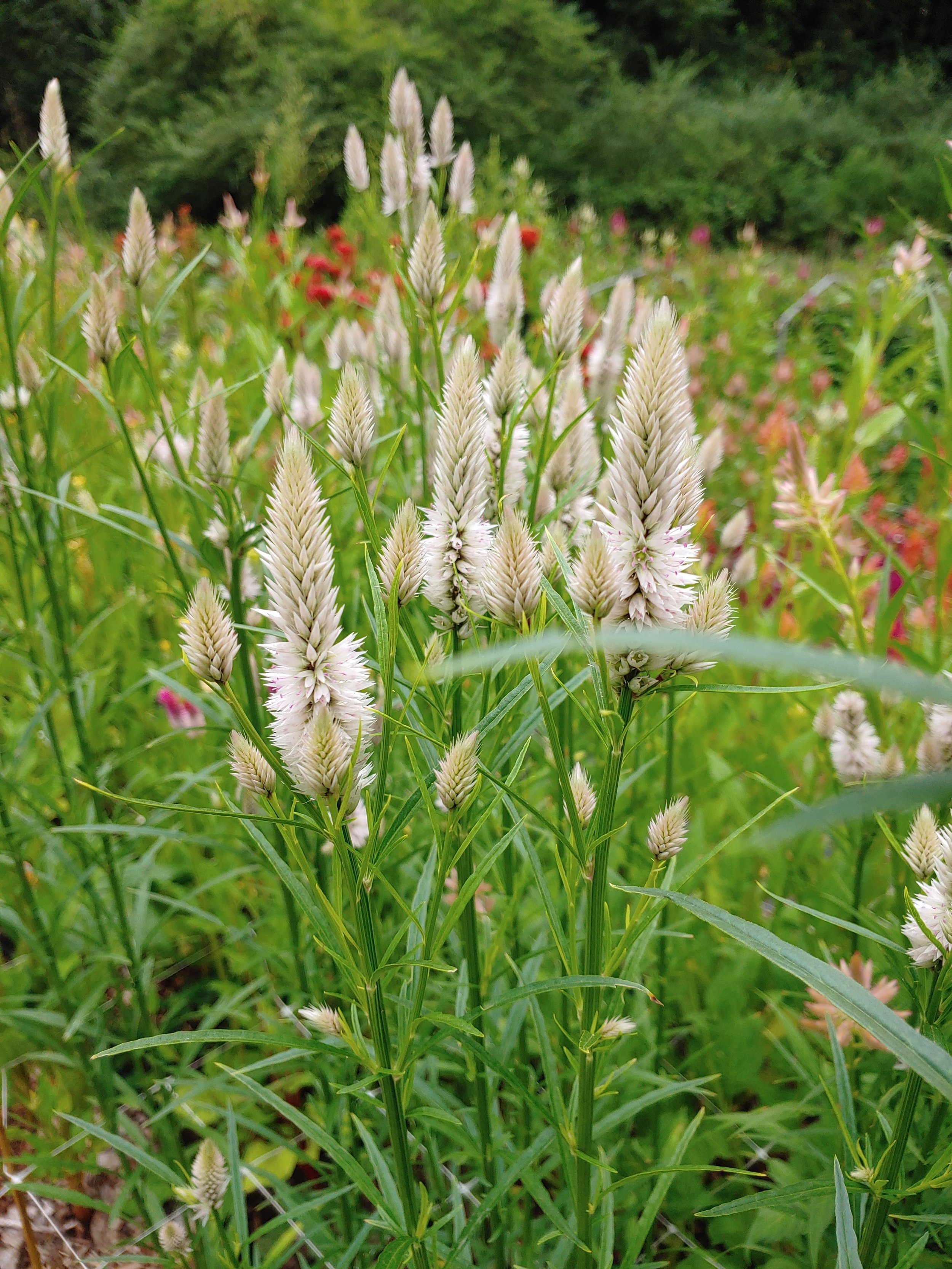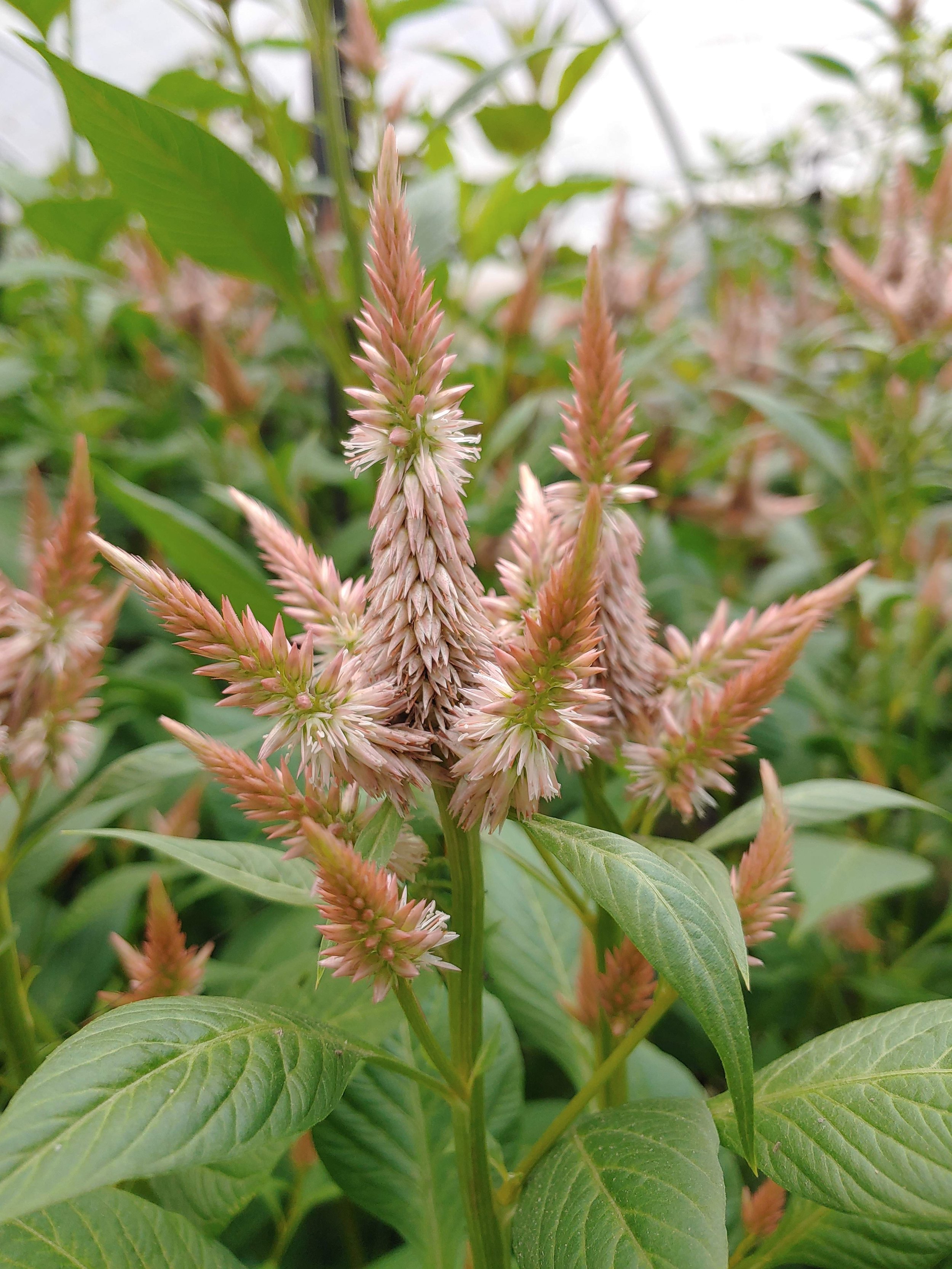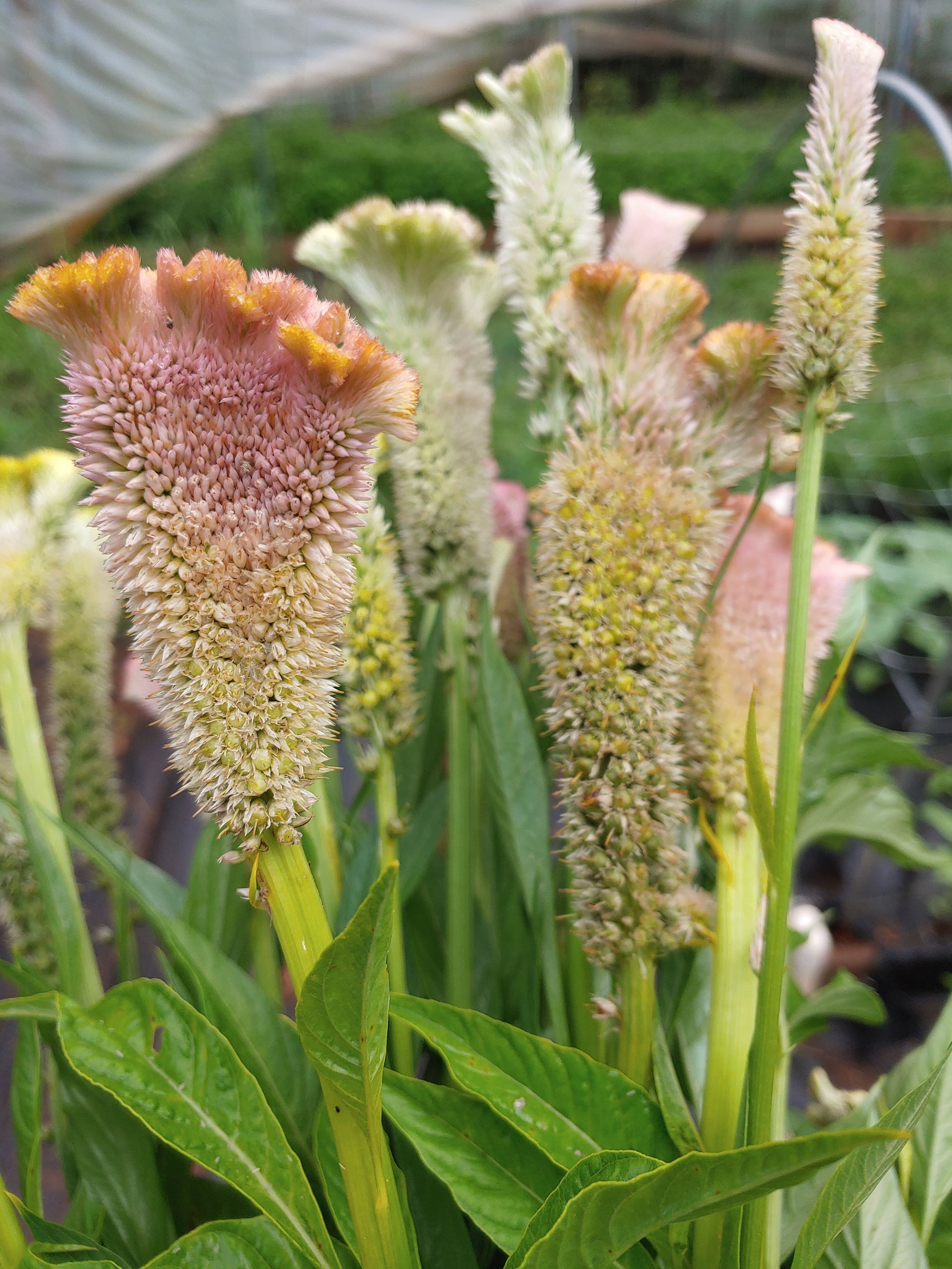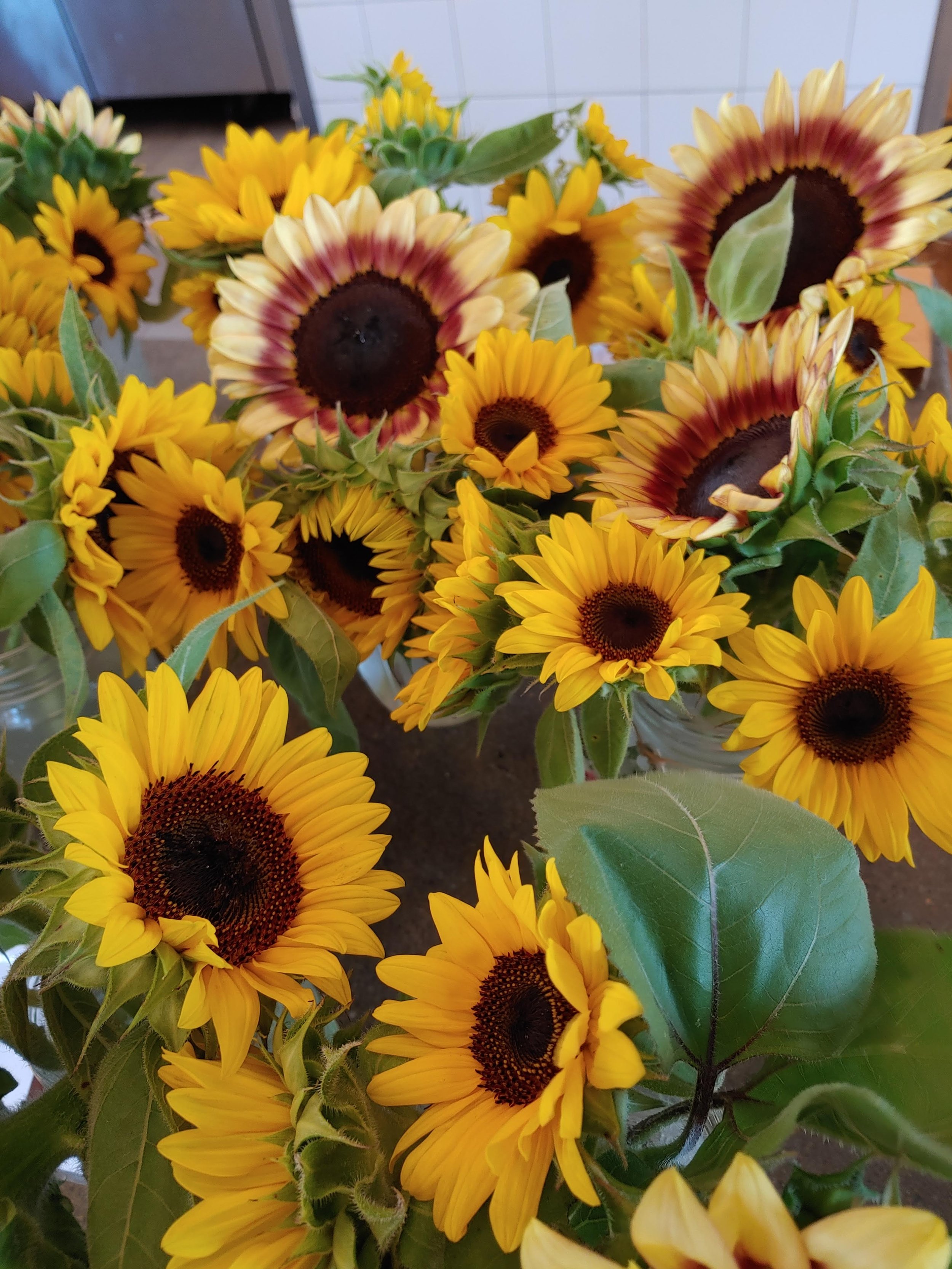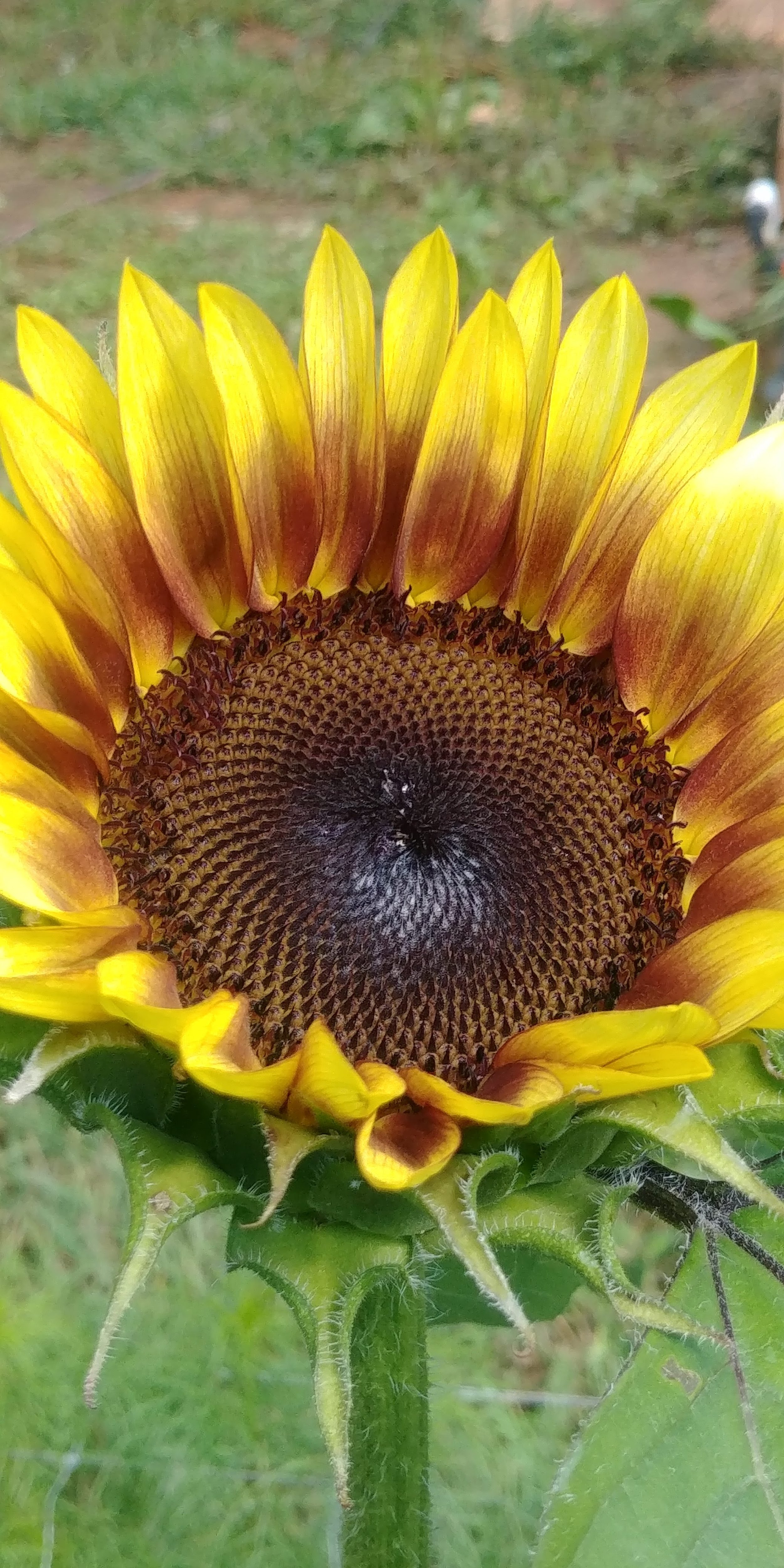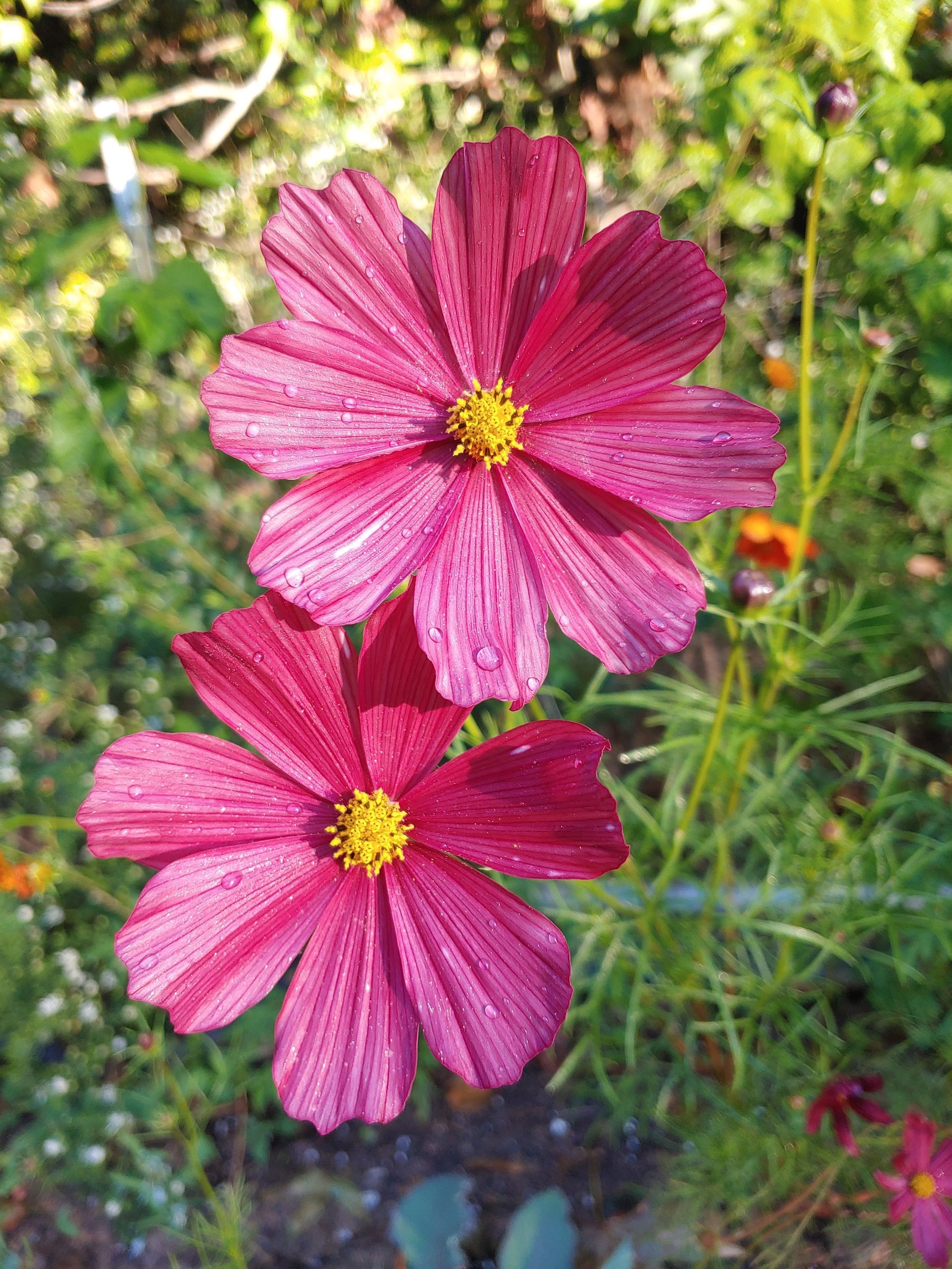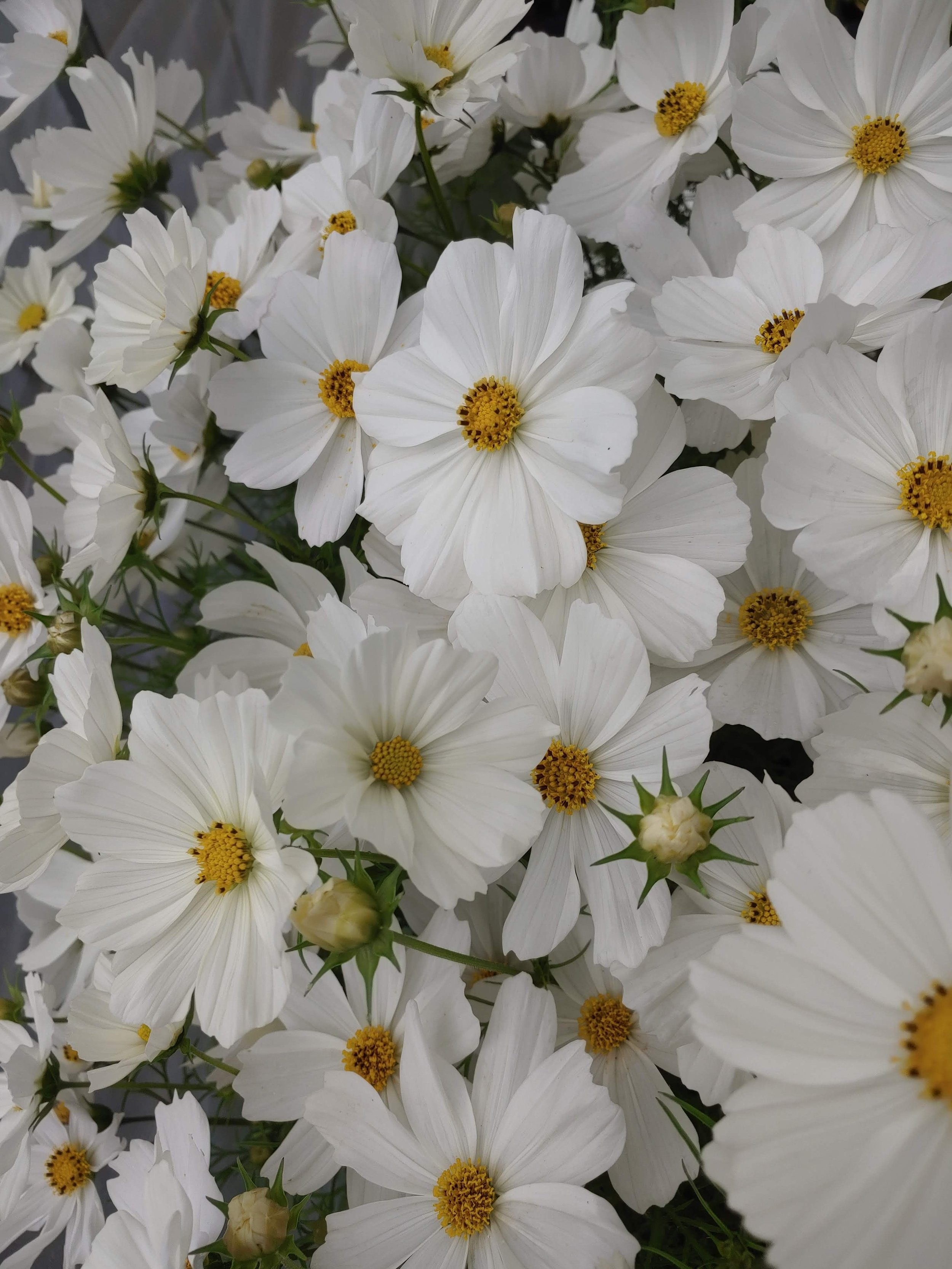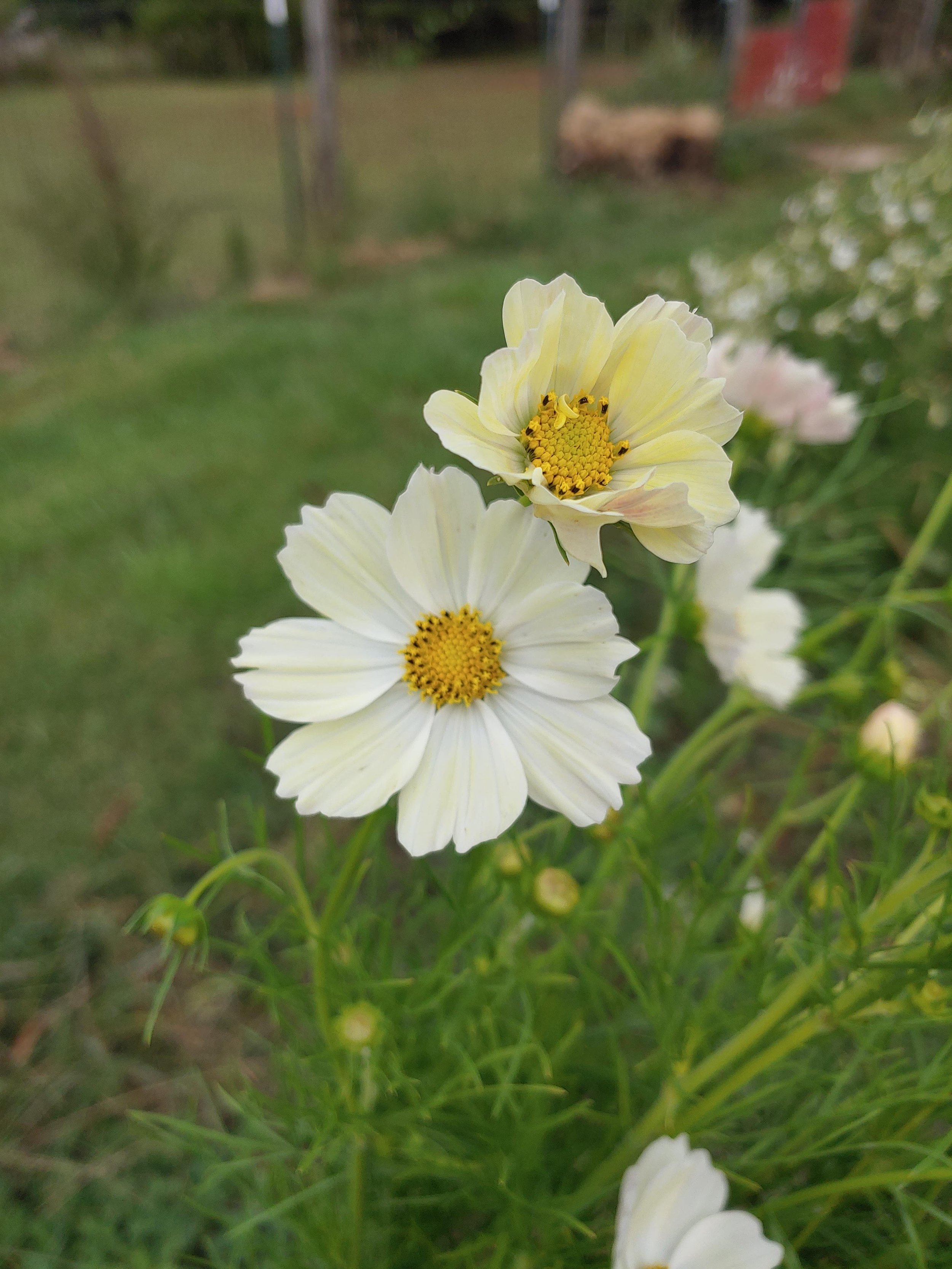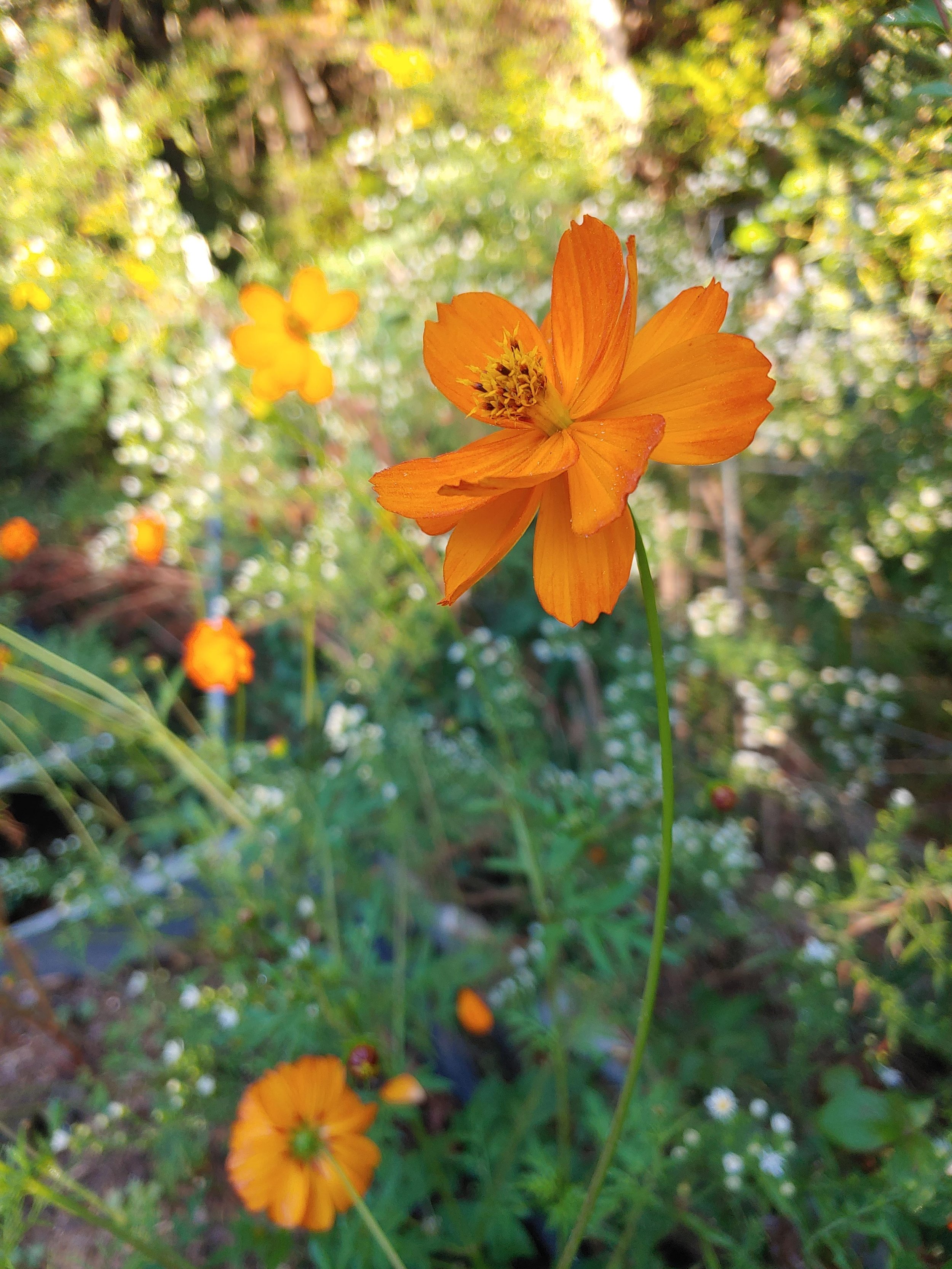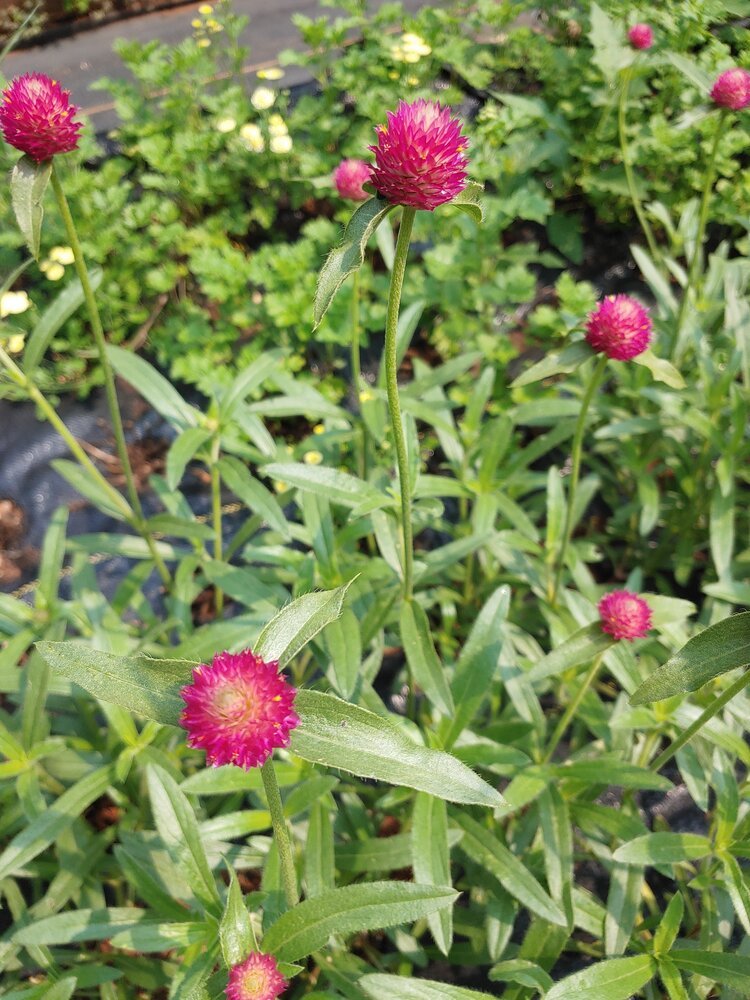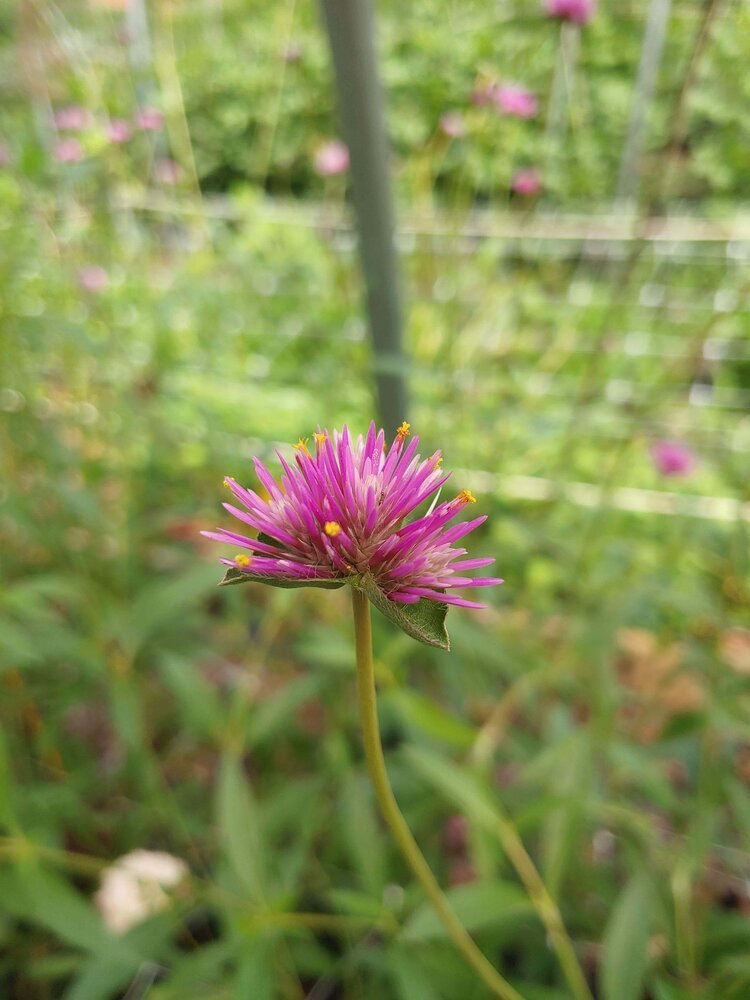
The Mulch Chronicles- Part 1
I’ve said it before and I’m sure I’ll say it again but part of why I farm is the desire to experiment!
Weed pressure is very high on my farm so I have to have a solid system for controlling weeds. And preferably one that doesn’t require a ton of time either!
I began planting my dahlias the same old way this year but I knew in my gut that I wasn’t happy with it. I began researching, talking to other farmers, and just generally thinking about the process. The longer I farm, the more I question everything I do. There’s so much labor that goes into growing that I’m constantly looking for innovations and refinement.
So today begins a multi-part series on mulch! (Didn’t think I’d find enough to say about mulch for several posts but with everything that’s been on my mind- I don’t think it’ll be a problem)
So before we get to what I’m experimenting with- let’s take a look at where I started.
I wish I had a picture from the summer of 2018. But maybe I can describe it: mid July, 90+ degrees everyday, full sun, sweat dripping everywhere. I’m staring at a bed of weeds so high that you wouldn’t know there were dahlias growing in there unless I told you. This is what my dahlia field looked like!
I’m pretty sure I lost it several times that year. This is when I began thinking about planting in black fabric mulch. (I did have the dahlias mulched with wood chips— but as you see above- it didn’t work) Over the winter, I began burning holes into black fabric mulch for each dahlia bed. I had resisted the black fabric growing trend for years because I had a lot of reservations about it. But I was desperate!
These raised beds are 4x16 and each bed holds 64 plants at 1’ spacing. And up until this past week- this is the system I’ve used. And it worked reasonably well —until last year.
Last year’s weather showed a lot of the downsides to black fabric mulch. The things I feared began to come true! The extreme heat and drought we faced didn’t interface well with the black fabric. I lost hundreds of tubers that basically just burnt up in the ground.
I had to pull out all my tricks to cool the field down- overhead watering during the day. We also used Surround crop protectant (this is a kaolin clay based spray that is used by a lot of organic fruit farmers). The Surround spray is white so it not only protects your crop but also reflects light. We sprayed the fabric and the plants.
This picture is from late June of 2022. As you can see, you have to keep spraying as the plants grow. Also a lot of rain will wash it off (but it will last through some rain- just depends on how much). Also once your plants begin to bud you have to discontinue use because nobody wants a white chalky stem! But it helped get me to the point where the plants where big enough to shade the fabric.
Now do I think black fabric is a bad idea for hot climate growers? Well— it all depends. If you are a more extreme hot climate (zone 8 plus), then it’s probably not going to be the right thing for you. But I’m a zone 7b and I run this kind of weird borderline. Things that work for cool climates can sometimes work here as well as the really hot climate methods too.
I do think that if you plant early enough in spring to get a thick plant canopy over your fabric that this system could work well for a hot climate grower. But I don’t like planting super early because I don’t want blooms in July. I will say that the black fabric does a fantastic job at keeping the weeds down. We usually make one weeding pass through the field when the plants are around 18” tall and that’s about it for the season.
But after last years extreme heat and drought, I knew I had to find another way.
I’m experimenting with 2 methods this year: straw mulch and cover crop mulch. We’ll talk about straw first (cover crop mulch is part 2)
So why haven’t I tried straw before? It does seem like the obvious choice. Well I did try it - many years ago and not long after laying it down, I had a nice crop of green grass growing under my plants. I soon discovered there wasn’t a clean weed free source of straw locally to me.
I mentioned this to my grower friend, Lori (of Broad River Blooms). She, being the generous person that she is, shared with me her straw source.
For my local friends, you can order this through Tractor Supply stores, possibly Lowe’s too. It’s an extremely fine milled straw. It makes a very dense mat over the soil. It also has a tackifier that keeps the straw together and helps prevent washing away.
I decided at first I would try it on one bed. I put it down about 2 weeks ago and began keeping tabs on that bed. Watching for weeds (too soon to tell on that part) but also checking moisture levels. The black fabric tended to get so hot that the soil was drying out underneath it. After a few days (with no rain and only 1 run of the irrigation system), I did a moisture check. It was still moist underneath the mulch. The bed next to it with black fabric was bone dry!
Since this picture was taken, the dahlias have begun to poke through. We have also had a heavy rain— the straw stayed in place! Now we wait to see if it keeps the weeds down after all that rain.
(BTW- I’ve figured that one bale will cover at least 2 4x16 beds).
Another thing to think about when using any type of mulch while growing dahlias is removal. If you dig your tubers in the fall, you must think about how the mulch will affect that process. The straw seems easy to handle. If it’s too thick, we will rake it off the bed. With the fabric mulch, we had to be very careful pulling it off to make sure we didn’t knock the labeling tags off our plants.
Another bonus to using a natural mulch is that it will break down and add organic matter to the soil over time.
The only cons I’ve thought of for the straw mulch so far are — expense. The black fabric is reusable so it’s a one time expense. But I’ve done the math and the straw is still affordable within my crop projections. Second, there is always a risk of residual herbicide when bringing something like this into your farm. I do feel better about buying this brand rather than sourcing straight bales. I know that straw bales are often purchased from many sources and therefore there is less control over what gets sprayed on the grass before it’s cut.
Over the next week, I am going to be removing the fabric from the beds we’ve already planted and adding the straw mulch. The tubers are just beginning to sprout so if I do it now, I won’t damage the plants.
I really hope the straw keeps the weeds down because if not, it’s going to be a lot to keep weeded!
Next time— using cover crops as mulch. Let’s just say this is where it gets interesting (and a bit creative)!
The Layered Garden Bed - Update
Everything is sprouting in my layered bed. The Tahiti daffodils are blooming. One small dahlia sprout came up last week due to the 3+ weeks of warmer than average February temperatures. But the last 3 days of frosts killed it off. It will resprout though! The concept is working beautifully so far!
If you missed Part 1 of this project, click here.
The Layered Garden Bed
While relaxing a bit before Christmas, I was browsing Sarah Raven’s Cut Flower Garden. I read about a method of planting bulbs in a layered method— but in a garden bed setting. I’m familiar with this process for bulb pots. But I’d never considered it on a larger scale.
But why not? Of course I needed to give it a try! I filmed the process of planting the bed and I’ll report back occasionally as the season progresses.
My Favorite Perennials to Add to Dahlia Bouquets
Y’all know I love Dahlias but my second love is perennials! What’s not to like about plants that you plant once, give a bit of love once or twice a year and then enjoy their amazing show year after year!
There are some well known Fall perennials but I’ve been doing a lot of work over the years to find some more unique plants to add to my collection.
Sedum and Japanese Anemones are two of the most common autumn perennial choices but they are actually two of my favorites because they are so easy to grow.
Sedum is about as close as you will get to a plant it and forget it plant- drought tolerant, rarely bothered by pests, lasts forever in an arrangement, holds up out of water for days. I grow a couple of varieties but my favorite is still Autumn Fire (the darker version of the well known Autumn Joy). Really all you are looking for with sedums is enough stem length for a bouquet— just make sure the variety is at least 20” tall and you’ll be fine. They like full sun and you can easily create more plants by dividing every few years or propagating via rooting the leaves.
Japanese Anemones are a shade lover here in our warm climate- Partial sun. If you only have a full sun area you may get some sun scorch but as long as you give them plenty of water, they’ll still flower well. They tolerate our heavy clay soil very well- I think because the clay holds water and they prefer their roots to be cool. Once again, you want to look for varieties with a taller stem length- 22” minimum. There are single and double varieties in whites and various shades of pink. They are a bit shorter in vase life - harvest them once the first bloom is very mature and the secondary buds have begun to open.
Now- a few things that aren’t quite as common. There are several really good shrubs that make great cuts for bouquets and bloom/berry in the fall.
Snowberry is a new favorite for me. I had my first snowberry crop last year and I loved it. I’d plant 100 more bushes if I had room. Snowberries are a medium sized shrub that come in white and shades of pink. They flower in early summer and then those flowers fall off and begin to produce berries. They start off green and then turn either white or pink depending on variety. In my climate (7b), they are harvestable in September. This shrub is easy to grow, I was able to get a small harvest on my second year (I planted 2 year old plants) and deer don’t bother these!
Caryopteris- You’ve heard of this one I’m sure— but have you seen the new colors available? For years, caryopteris has been out there in various shades of blue/purple. But now there are white and pink versions available and even some lighter blues. Some of these new varieties are shorter so you definitely need to check flowering plant height before you buy. I grew Caryopteris Pagoda Blush two years ago and loved it! I was warned beforehand that it’s cold tolerance for our climate was marginal. And - that came true when we hit mid teens one weekend last March. So be forewarned that the newer varieties aren’t as cold hardy. But if you love blue, grab one of the older types (they are taller anyways) and add a new shrub to your garden.
Beautyberry is another great fall shrub. I can’t speak on growing it yet because we are just adding it this year.
Dusty Miller- We definitely need a perennial foliage. Dusty works great in spring and fall in my hot climate, hates the summer but always pulls it out by late fall. I grow mine in a hoop house because I’ve noticed far less disease issues if you keep the rain off it. Candicans is my favorite variety- this is the lacier type. But New Look is great too— more solid leaf type.
Mint- This is my other Fall favorite green (actually it works all season long). You want to make sure mint is mature when you cut it- the stem should feel fairly stiff about 5-6” from the top. It’s the type of plant you will need to trial a few times to get the harvest stage correct. Apple Mint is my personal favorite but most varieties of mint work well- just make sure they grow tall enough!
A few others that I wanted to mention- these aren’t necessarily “fall” perennials- more like all season perennials but I think they look especially good with dahlias. Agastache- comes in lots of colors now. The bold colors hold up well against the bold dahlia colors. Salvias- Same thing here- so many color choices. Agastache and Salvias work great because they will bloom once in the spring, you can cut back and sometimes get two more blooms before your first frost.
Clematis are another favorite. Most clematis bloom before dahlias but if you leave some blooms on the plant- you’ll get the awesome whirlygig seed pods. I think every fall bouquet should have some texture and these are my go to for adding texture.
Last but definitely not least if you haven’t jumped on the heirloom mum train yet— it’s time!
Heirloom mums are quite possibly the prettiest flower you can add to your dahlias. The colors are quintessentially fall! In my climate, they are perennial so I’m listing them here. But if they aren’t cold tolerant in your area, grab some mother plants and just root out your stock once a year. I’m not going into detail here about how to grow them because that’s another 10 blog posts probably. But you can’t have a list of fall perennials for dahlias without mums!
Fantastic Annuals to add to your Dahlia Bouquets
Dahlias are amazing and gorgeous and make a beautiful bouquet on their own but sometimes you want a bit more. This is the first of a 2 part series on great flowers to add to your dahlias bouquets.
For reference, I’m zone 7b and our dahlias mostly bloom August through October so I’ll be steering the discussion toward fall bloomers. First up- we are going to talk annuals. Part 2 will be fall perennials.
The basis of a good bouquet is foliage so let’s start there.
Scented Geranium is one of my favorites! So many delicious scents - my favorites are Attar of Rose and Chocolate Mint. You want to make sure you are buying a variety that gets tall enough for cutting- minimum 2’. Scented Geranium is also perfect because it’s a self perpetuating annual. You buy your mother plant once and then take cuttings at the end of fall, root over the winter and you’ll have it again next year. If you are zone 8 or above, you can often over winter it as long. If you get a random really cold snap- throw some mulch around the crown and give it until mid May to wake back up in the Spring. It takes awhile some years— really needs warm soil to begin growing again.
You’ll need to experiment with harvest stage because the stems do need to be mature to avoid wilting in the vase. Stems usually require an overnight conditioning period in water to fully hydrate. If they are still wilty the next day, then they were cut too early. You are looking for the stem to be hard about 6” or so down from the top. It’s hard to describe in words so that’s why I say it’s a process you’ll need to experiment with until you get the feel for it.
Silver Shield Plectracanthus is another favorite. Scented Geranium and Silver Shield are two of my standby’s because with Scented Geranium you get a nice warm bright green shade and Silver Shield gives you a dramatic cool gray. This allows you to create different color schemes for your bouquets from just two foliage types.
Silver Shield is grown from seed. It’s a slow grower so you’ll want to start it around April and then get it planted outside once your soil is sufficiently warm- don’t put it into cool soil. It’ll take a while to get fully mature enough to cut but it times out perfectly with when dahlias are at their peak.
Once again, you’ll need to experiment with maturity stage when cutting- you are looking for the stem to be hardened off around 6” down from the tip. Condition overnight in a cool spot in water. Silver Shield holds up so long in the vase that it usually begins to root in the water. This also means that you can take cuttings in late fall and keep your plants going through the winter inside your house and replant next spring. I love self perpetuating plants!
Now let’s talk flowers!! A lot of the best additions to dahlia bouquets are quite common. But that’s okay because you don’t want to compete with the stars of the bouquet. Let’s talk types and varieties first and then culture because the growing process is pretty similar for most of these.
Cosmos are a personal favorite. Nothing like a fluttery butterfly like bloom hovering over the top of your bouquet. Their wispy nature adds movement which is important to keep your bouquet natural looking. Personally I prefer single cosmos but I know a lot of folks like the double types. My favorites are Sensation Purity (White Single), Double Click Cranberry, Rubenza (Single Burgundy), Kiiro (Small Single Yellow), and Sulphur Cosmos (the orange and yellow ones).
Celosia is my other favorite fall annual. Nothing like the texture of it in a bouquet. There are cut and come again types like Flamingo Feather and Flamingo Purple (these get big- give them space!). Cockscomb (the brain types) are mostly one and done. The chief series cockscomb can be pinched but a lot of the other varieties are single stem cuts. Totally worth it though in my opinion!! I also love the Celway series- these are the spiky types. They have a wonderful color range that works so well with dahlia hues— try the Terracotta, goes with everything in the Fall!
Zinnias- of course! Personally my favorites are the Oklahoma varieties- I prefer their smaller size and colors but the big Benary types work well too. The important thing with zinnias is to make sure you are getting a cutting variety (short bedding types won’t work for bouquets). One plus to the Benary types is that they have some disease resistance which can be handy for Fall growing in humid climates.
Nicotiana- I love nicotiana for so many reasons. It’s beautiful, smells amazing but my favorite thing- It attracts hummingbirds! I’ll grow it on my farm even if I never cut it again just to see the hummingbirds. I can’t tell you how many times I stop and watch them every fall! This past fall I tried the Bronze Queen variety— chocolately brown! It’s gorgeous with fall toned dahlias. I love the standard white too- great for cool toned bouquets.
Sunflowers- My favorites are pro cut gold (yellow with green center) and pro cut plum (beigey and plum/maroon shades). Space them closely (6”) so they don’t develop huge heads. You don’t want them to compete with your dahlias.
Peacock Orchids- This is a bulb grown flower that you plant in the late Spring to early Summer. You’d think something like this would be a perennial but I’ve never been able to get them to flower a second year. They’ll grown green leaves but never any flowers the second time around. They are an affordable bulb though so you can replant each year. Peacock Orchid is the common name- it’s in the gladiolus family (Acidanthera murielae).
Gomphrena- My favorite variety is Fireworks. It’s pink with small orangey yellow tufts that look like fireworks emanating form the globular flower.
Quick primer on growing hot season annuals: All the above flowers can be grown from seed (except the Peacock Orchids). Zinnias and Sunflowers will work well from a direct seed. All of them can be started as transplants and that’s what I would recommend. The important part of growing annuals for fall bouquets is timing. You want to have a fresh planting of these annuals for your fall bouquets. Don’t plant in spring and then expect them to still be looking nice in September. Plant a second succession!!
For Sunflowers, begin seeding in late June and then plant more seeds each week or every 2 weeks (this is for single stem varieties, branching types- plant every 3-4 weeks). You can continue planting sunflowers until you are about 60 days from your first frost date.
For Zinnias and cosmos, plant new transplants around the 3rd to 4th week of June. (You’ll need to start those transplants mid to late May).
For nicotiana, begin seed in early June. Seed takes a bit to get going. But once you transplant, nicotiana will bloom with 4-6 weeks. It’s a quick one! And will continue to bloom until frost if you keep cutting it.
Celosia- I would plant 2 successions to have enough for all of fall. Plant the multi stem types in late June and then the single stem types in early July and then again 2 weeks later.
Gomphrena- transplants need to be ready to go in the ground early June for an early Fall harvest.
So what are your favorite annuals to add to a dahlia bouquet?
Are you signed up for the Dahlia Lovers Newsletter so you’ll receive Part 2 of this series? Click Here!
For more info on warm season annuals, check out these past blog posts:
Planting in a Heat Wave
What to Plant and When
Tips for a Great Summer Cut Flower Garden




